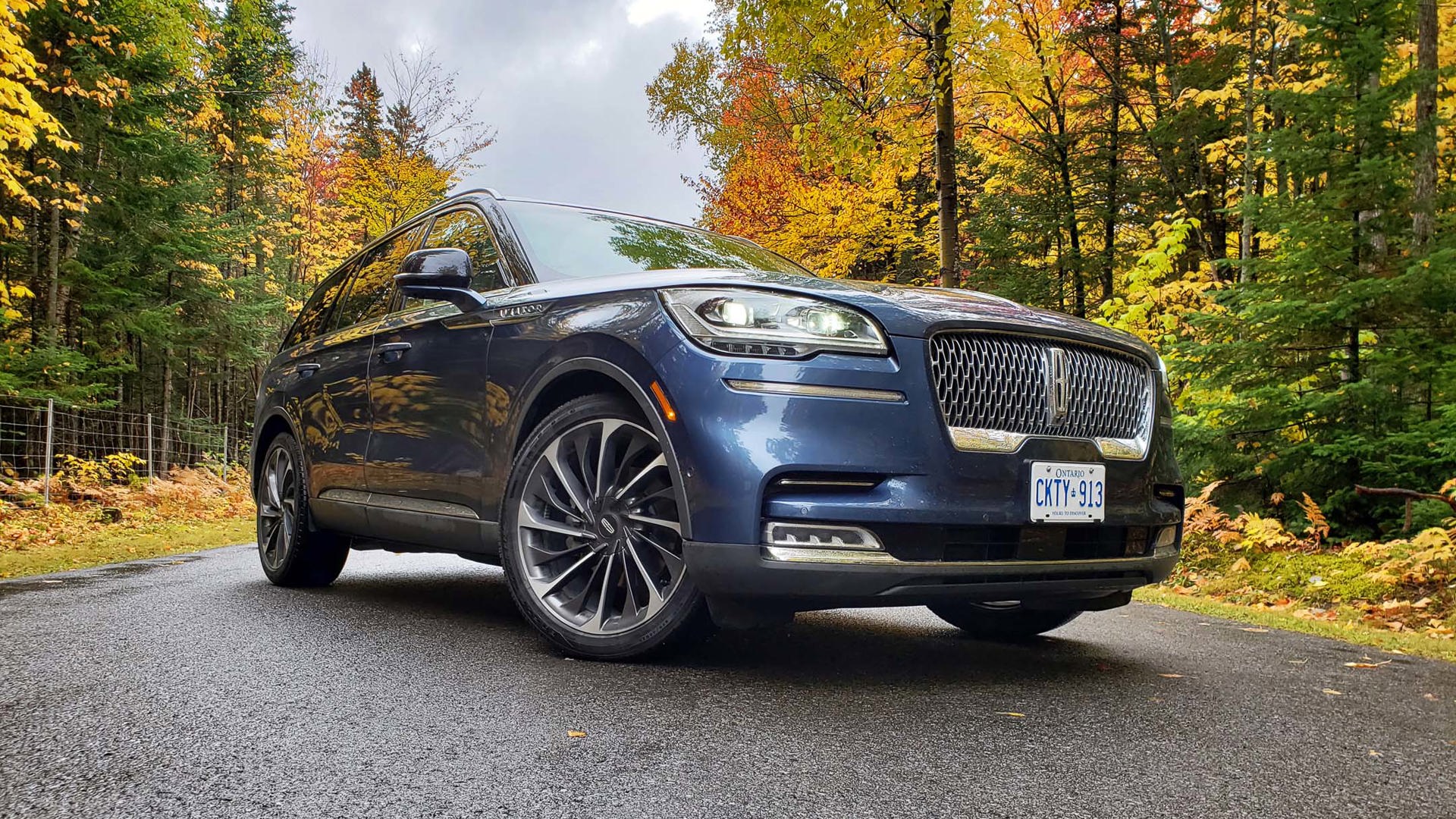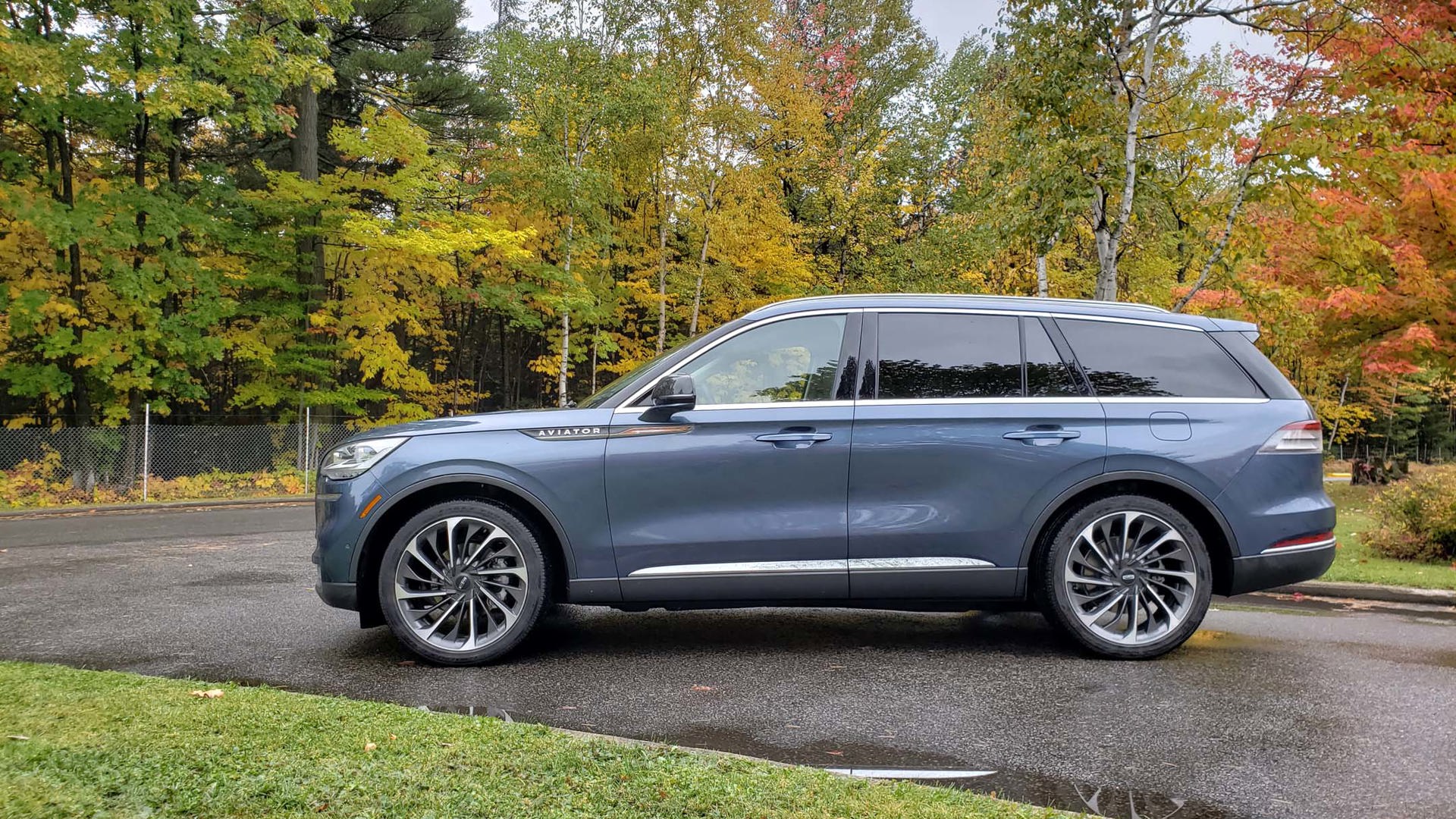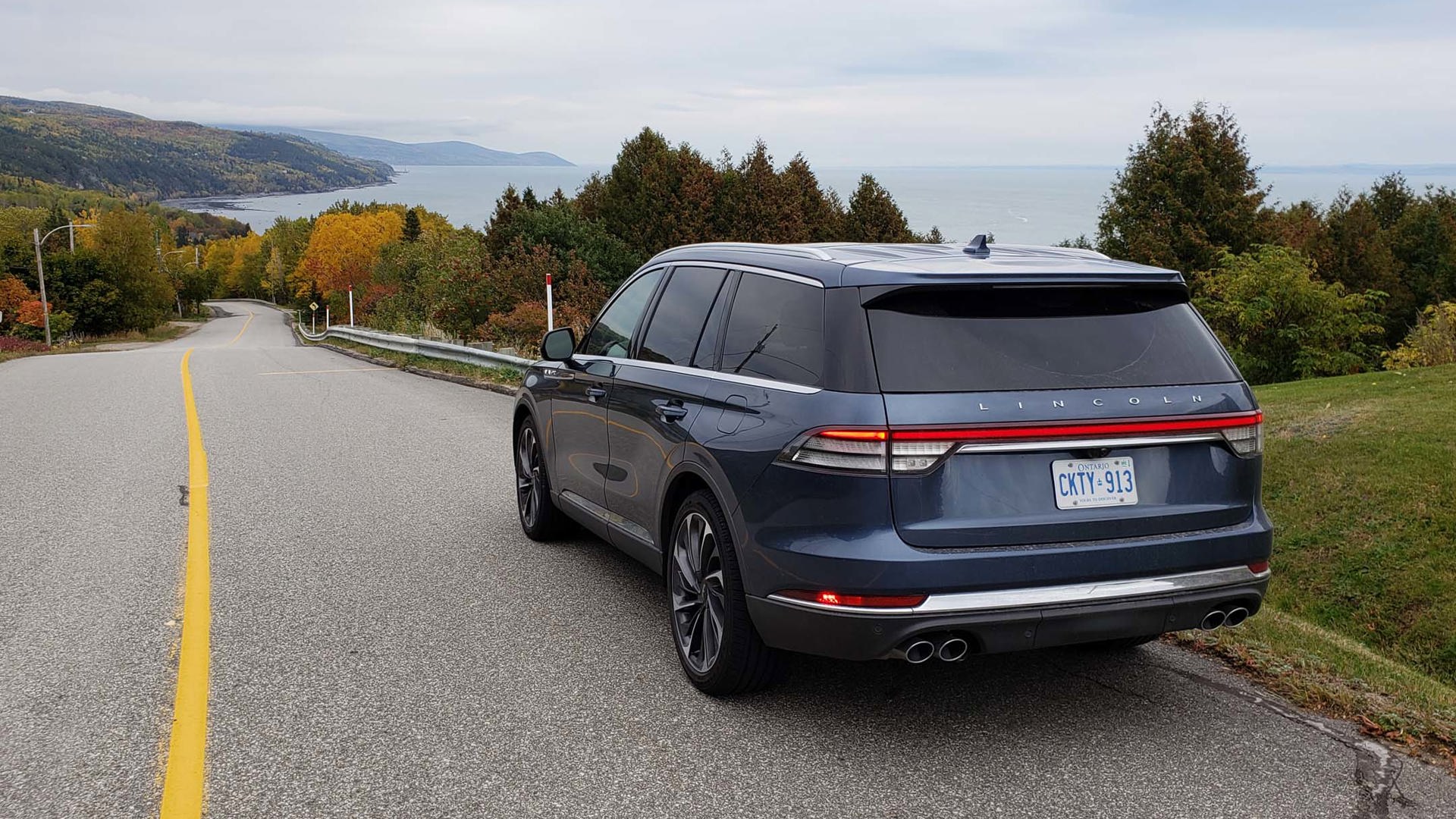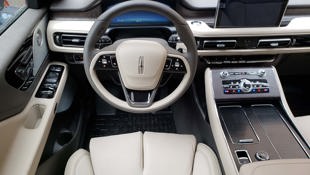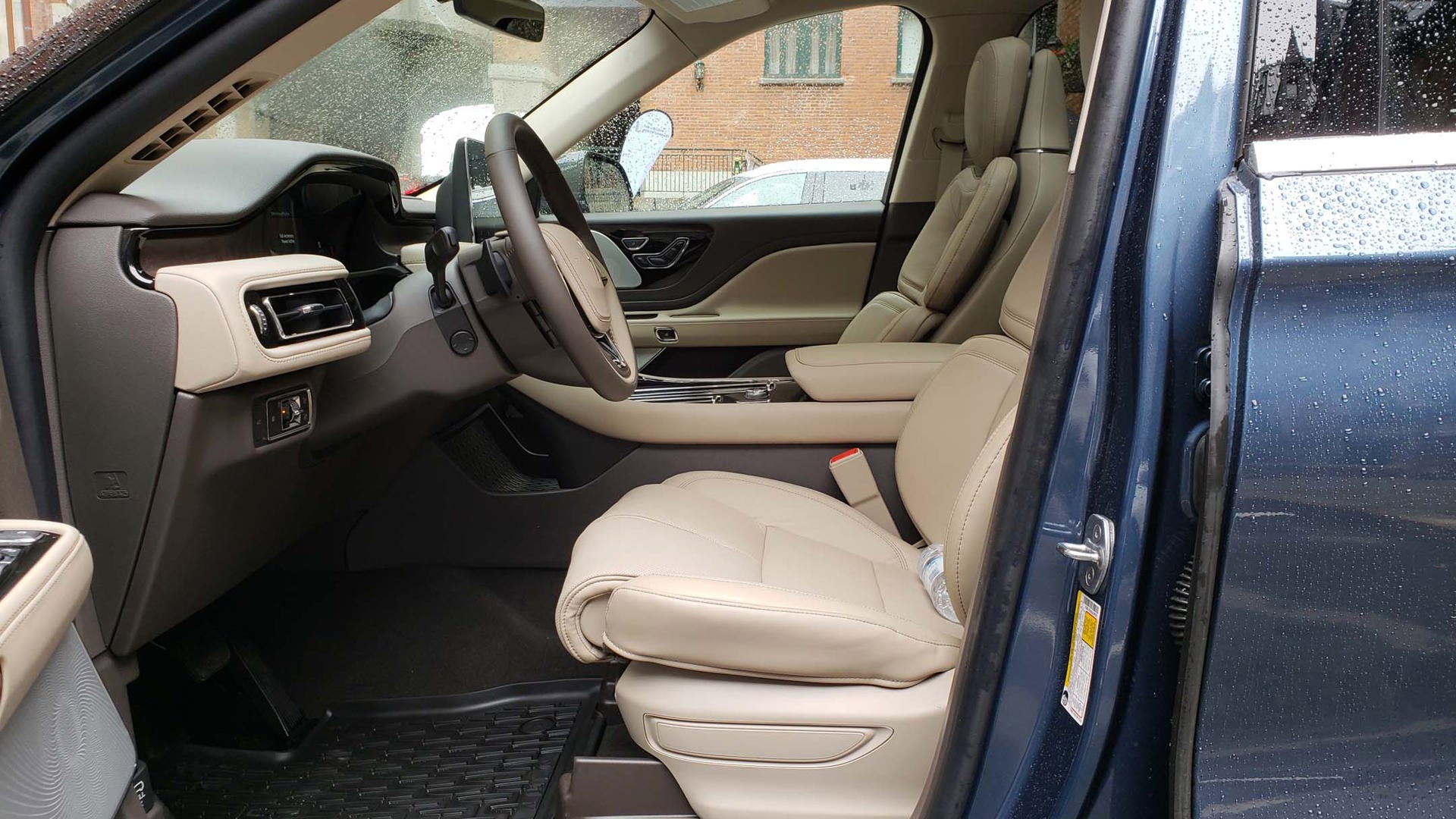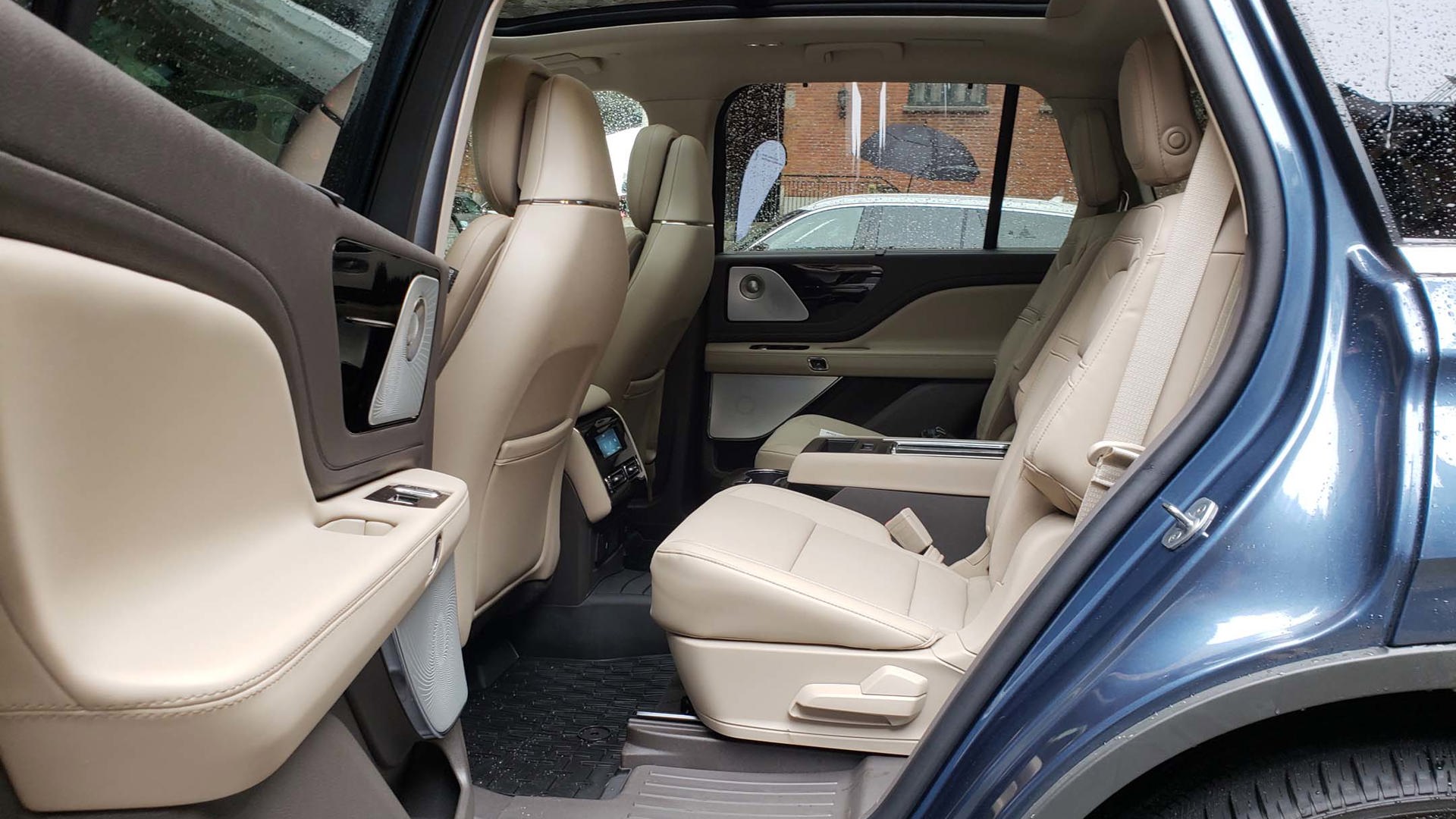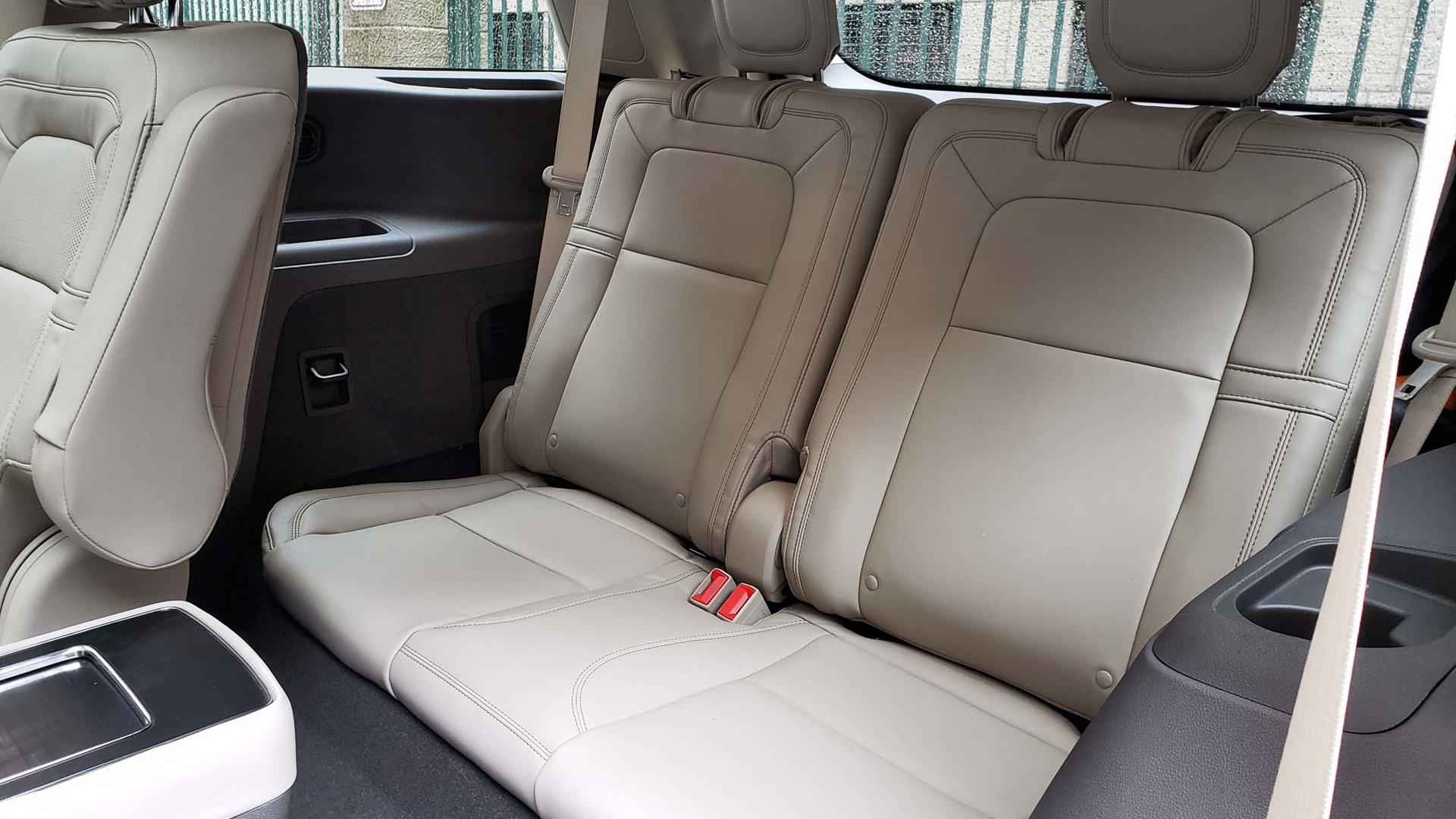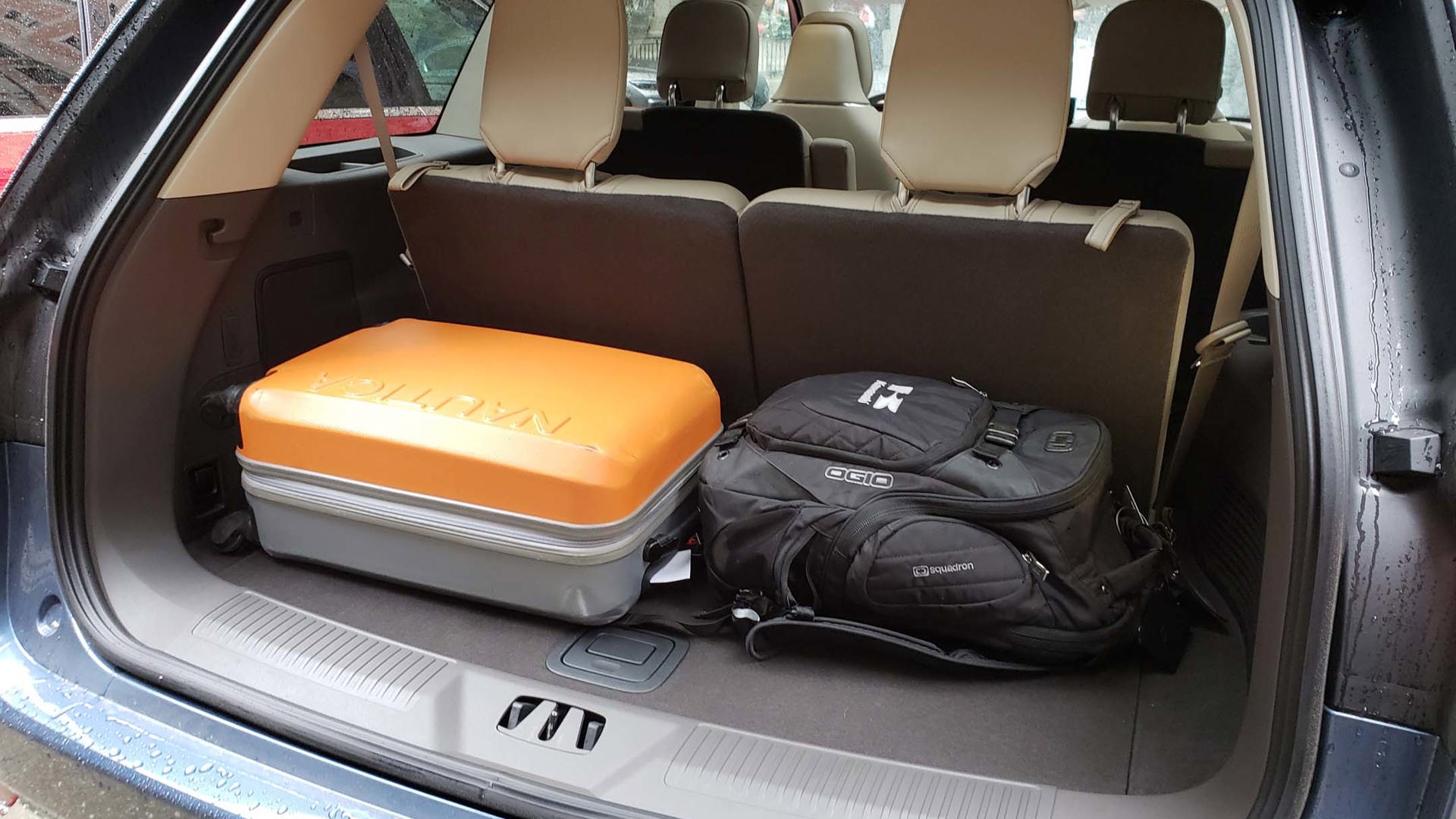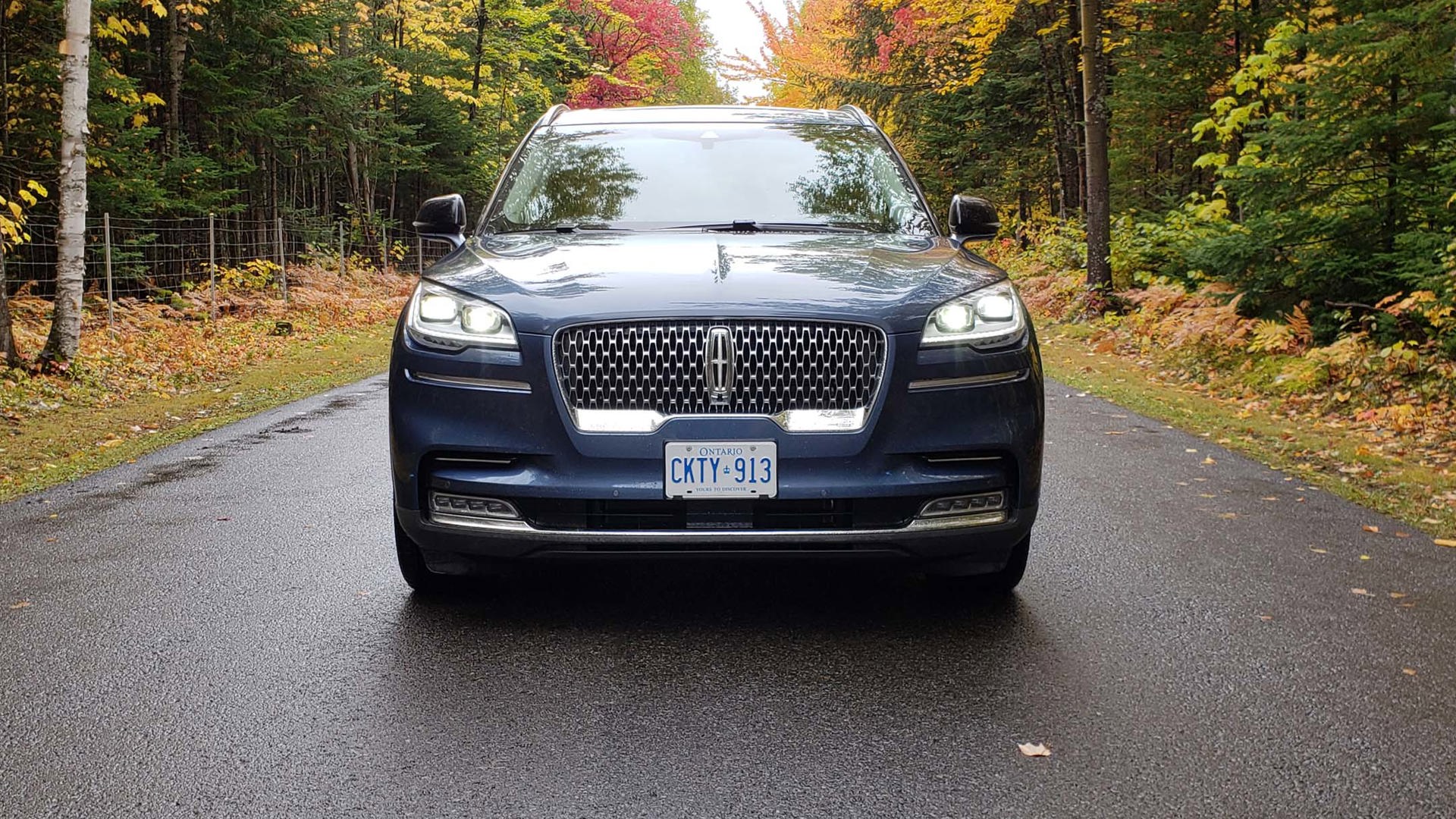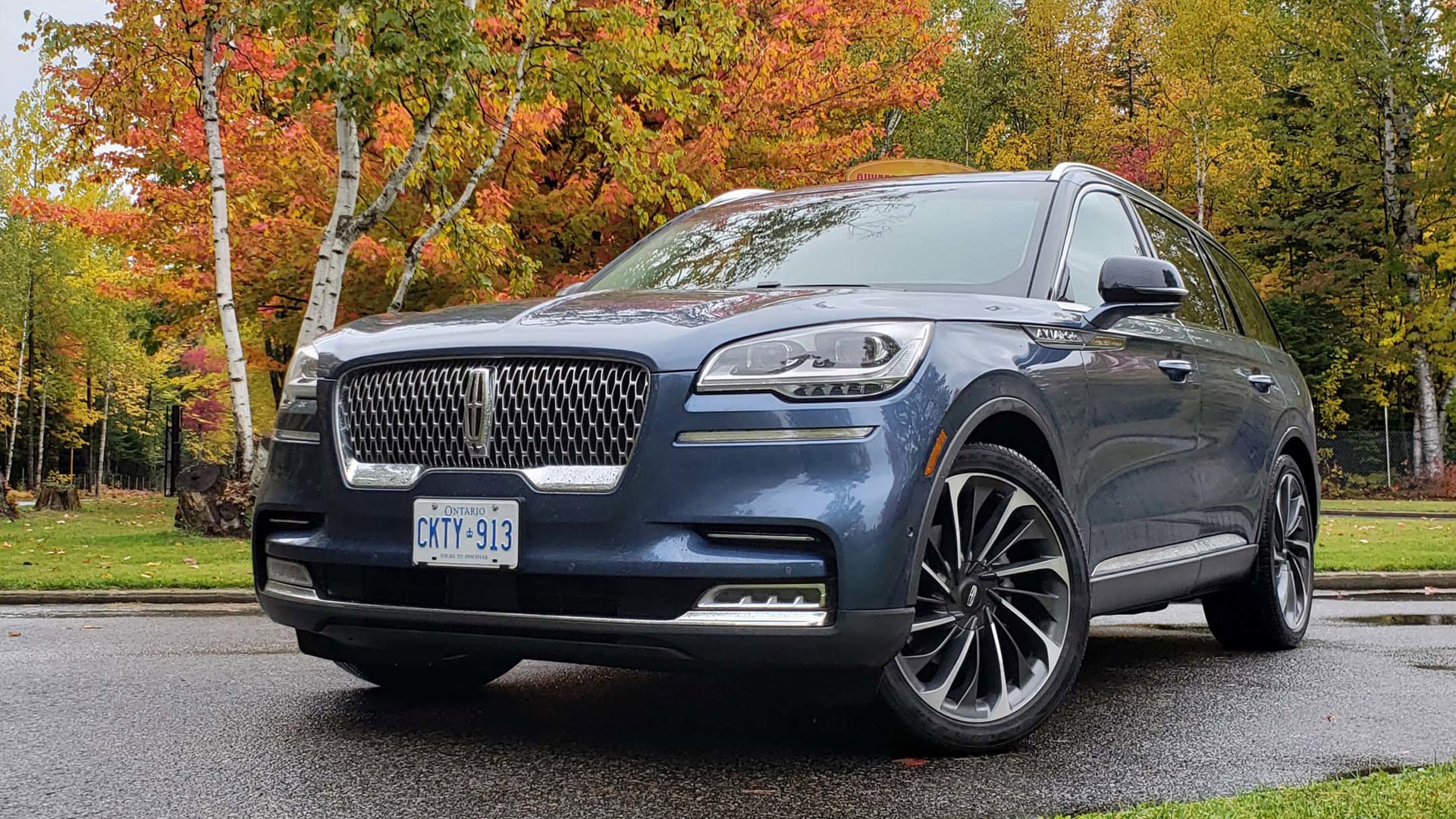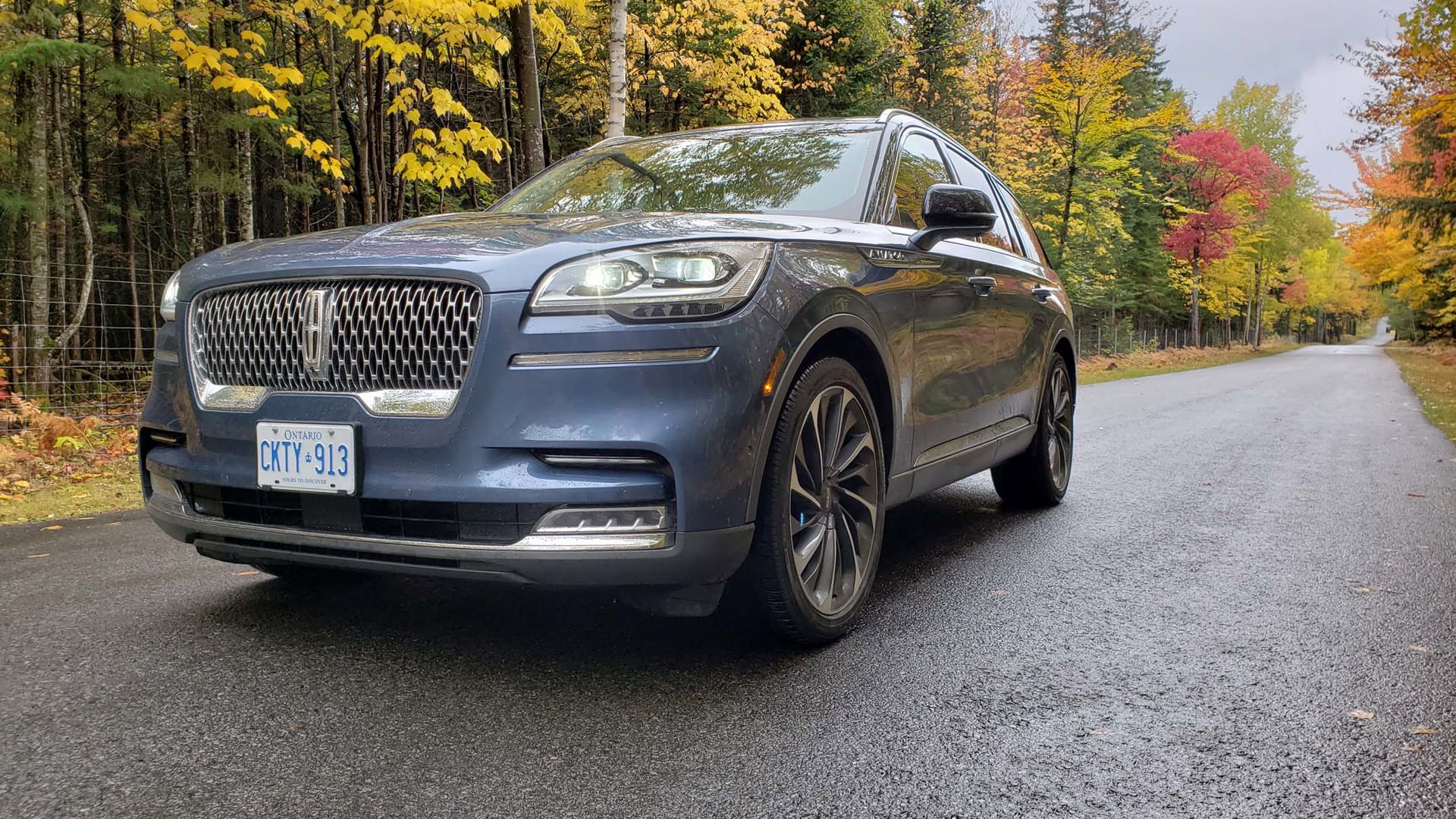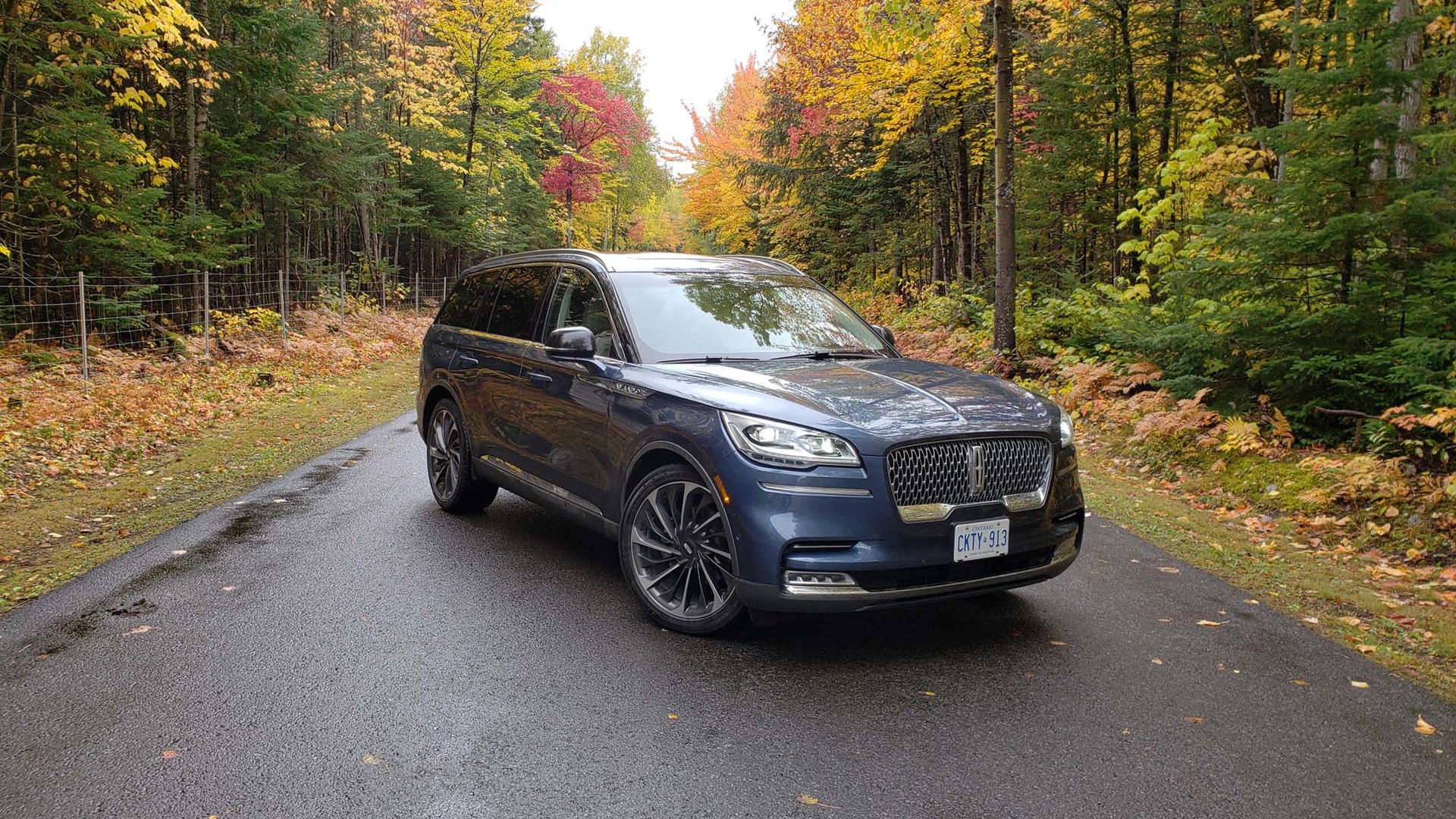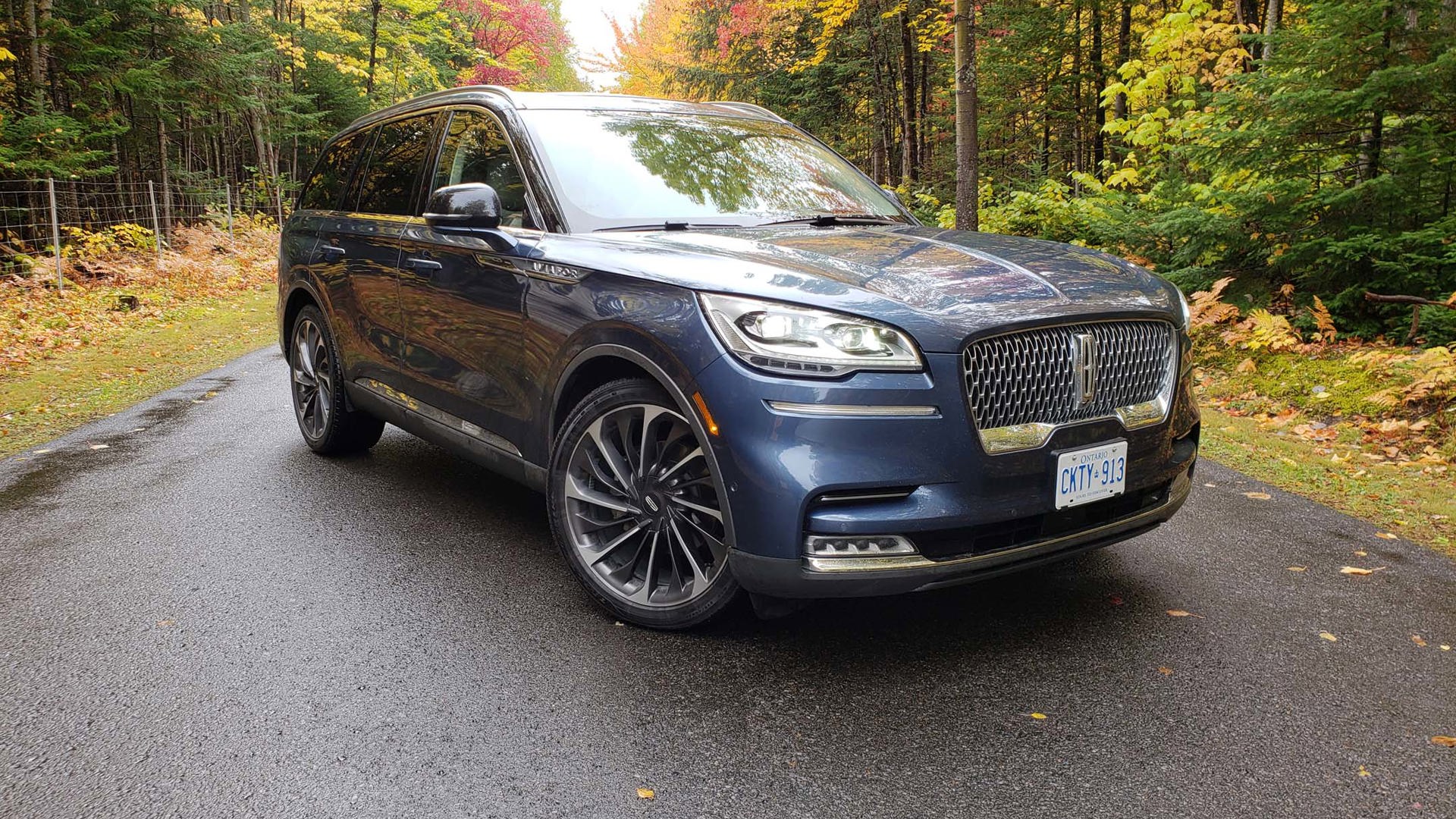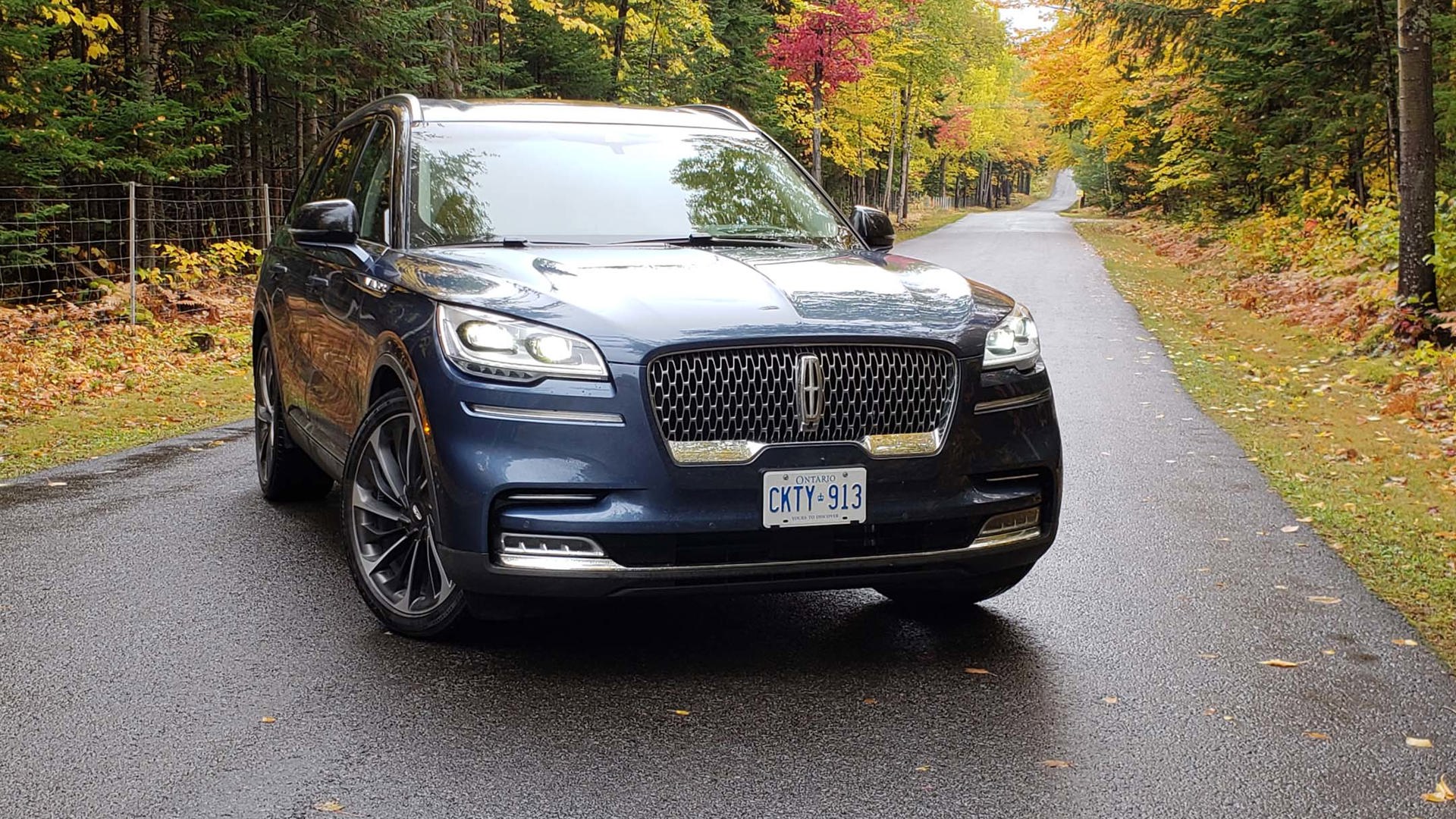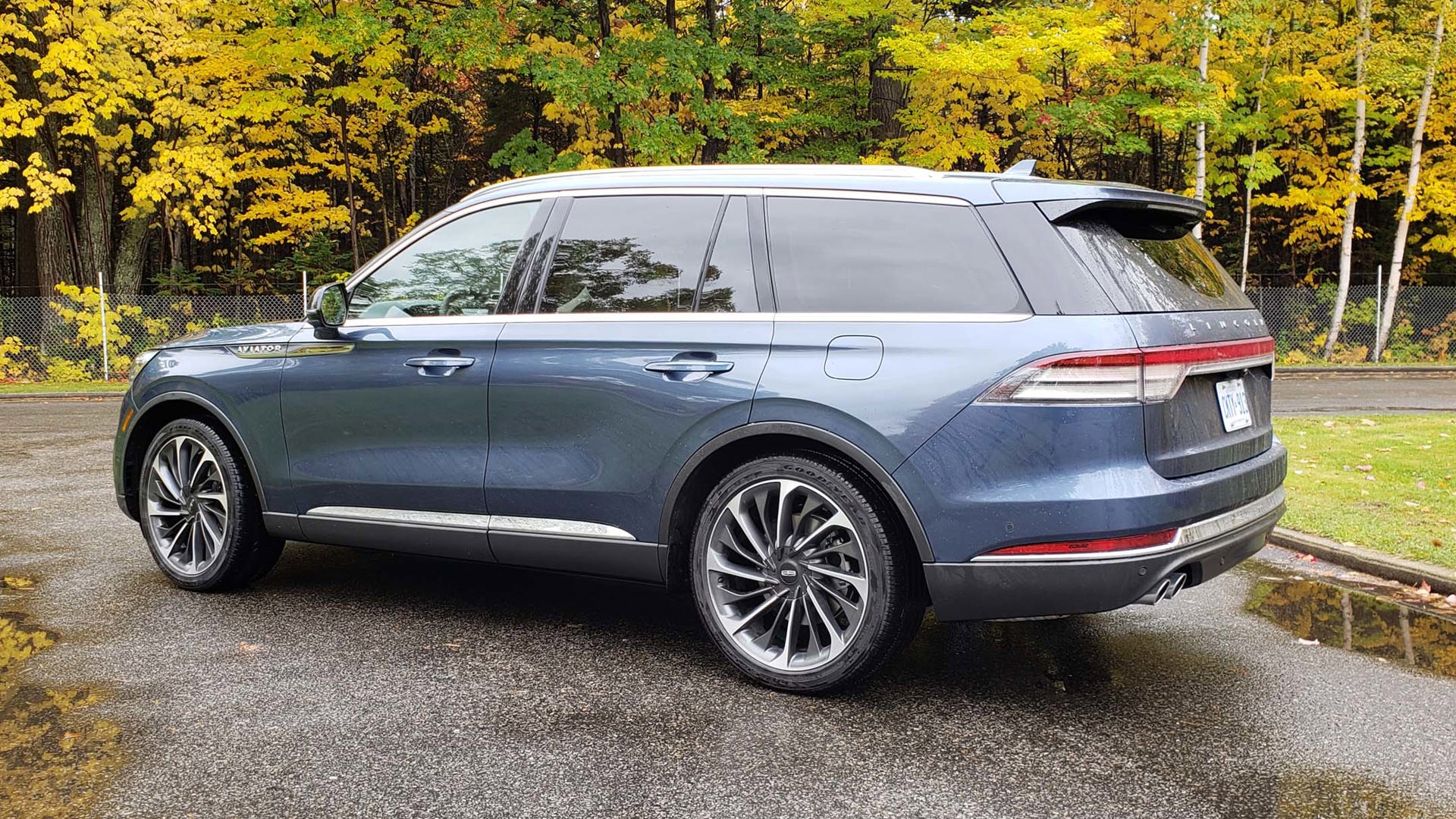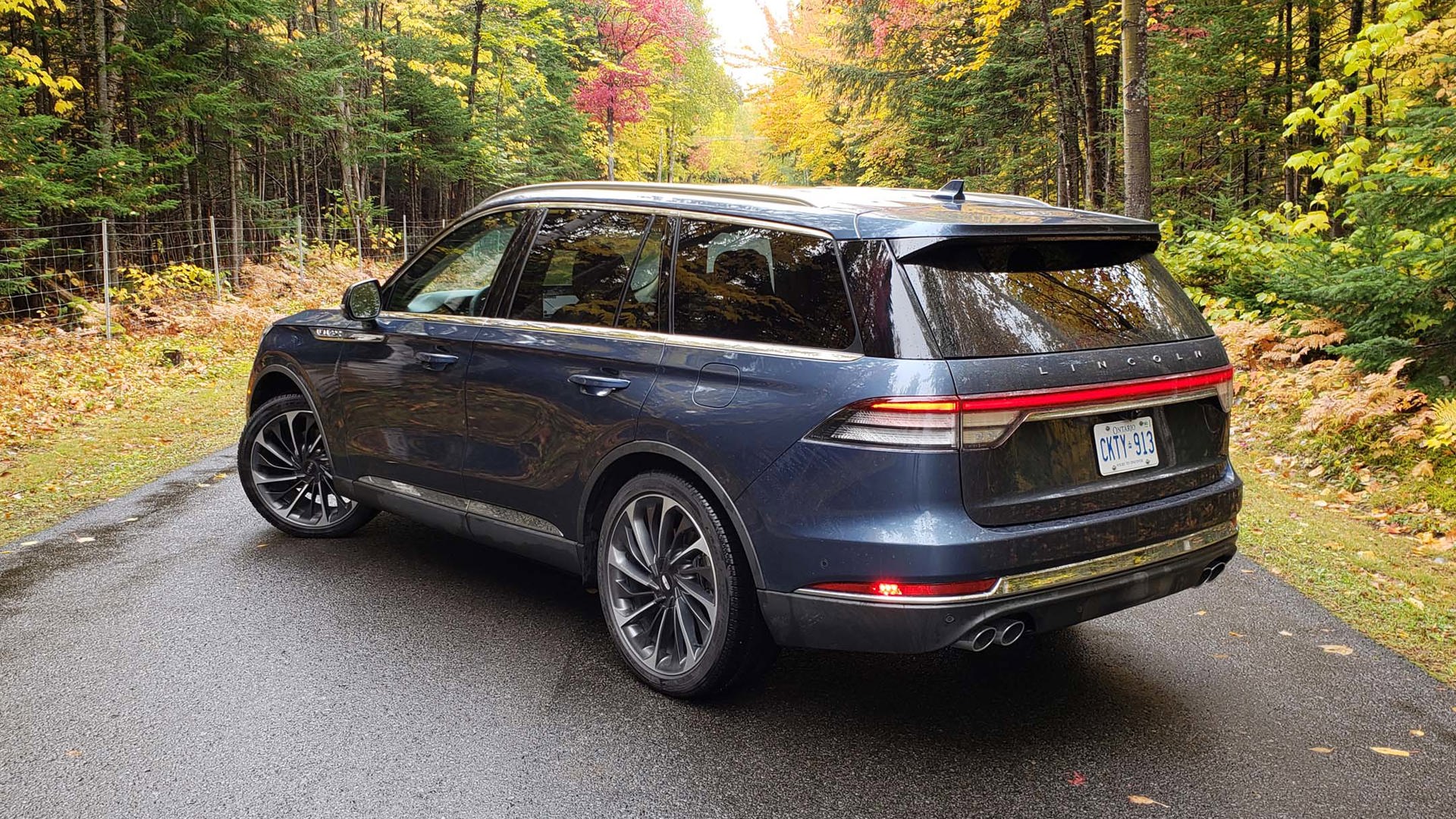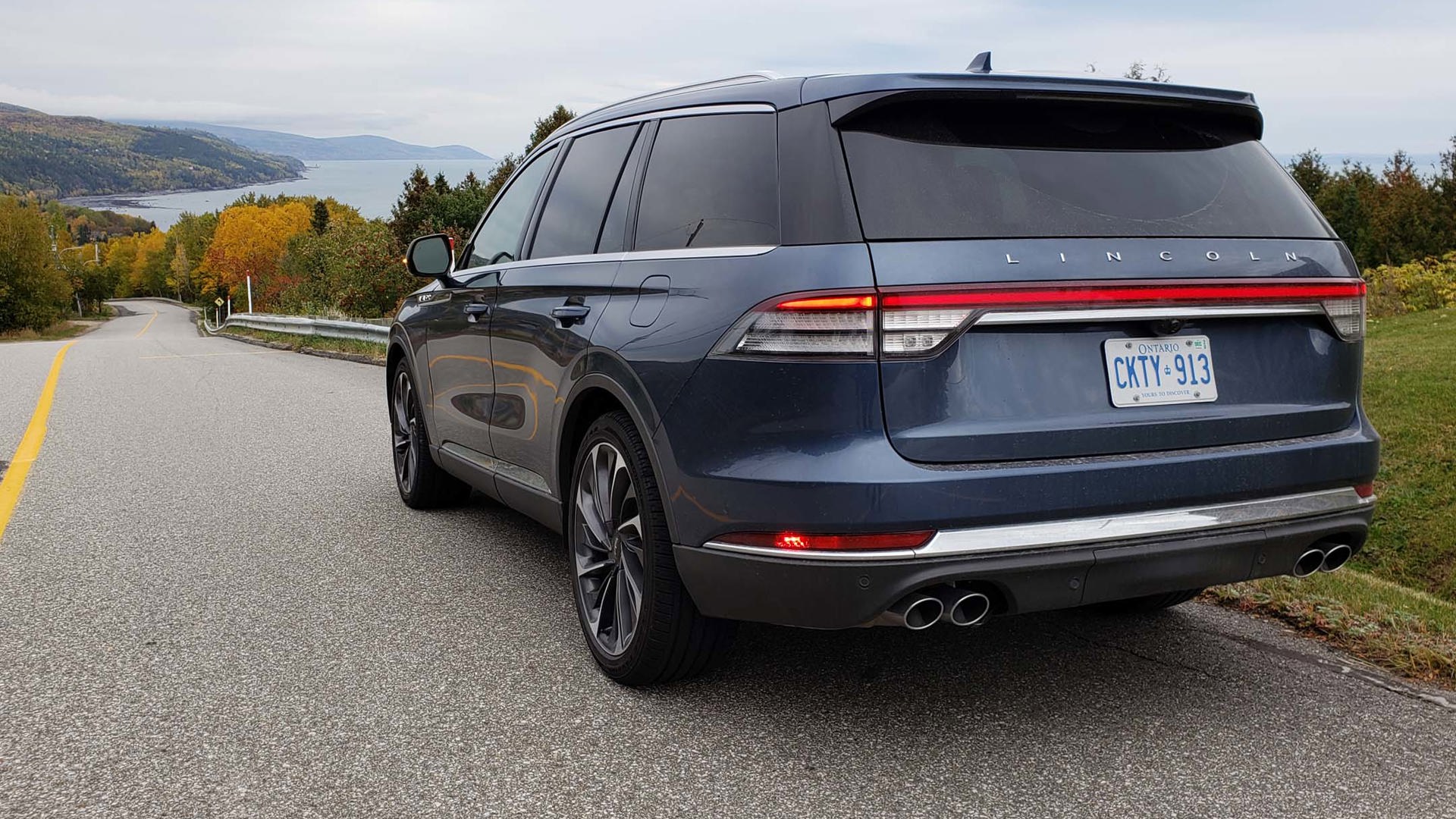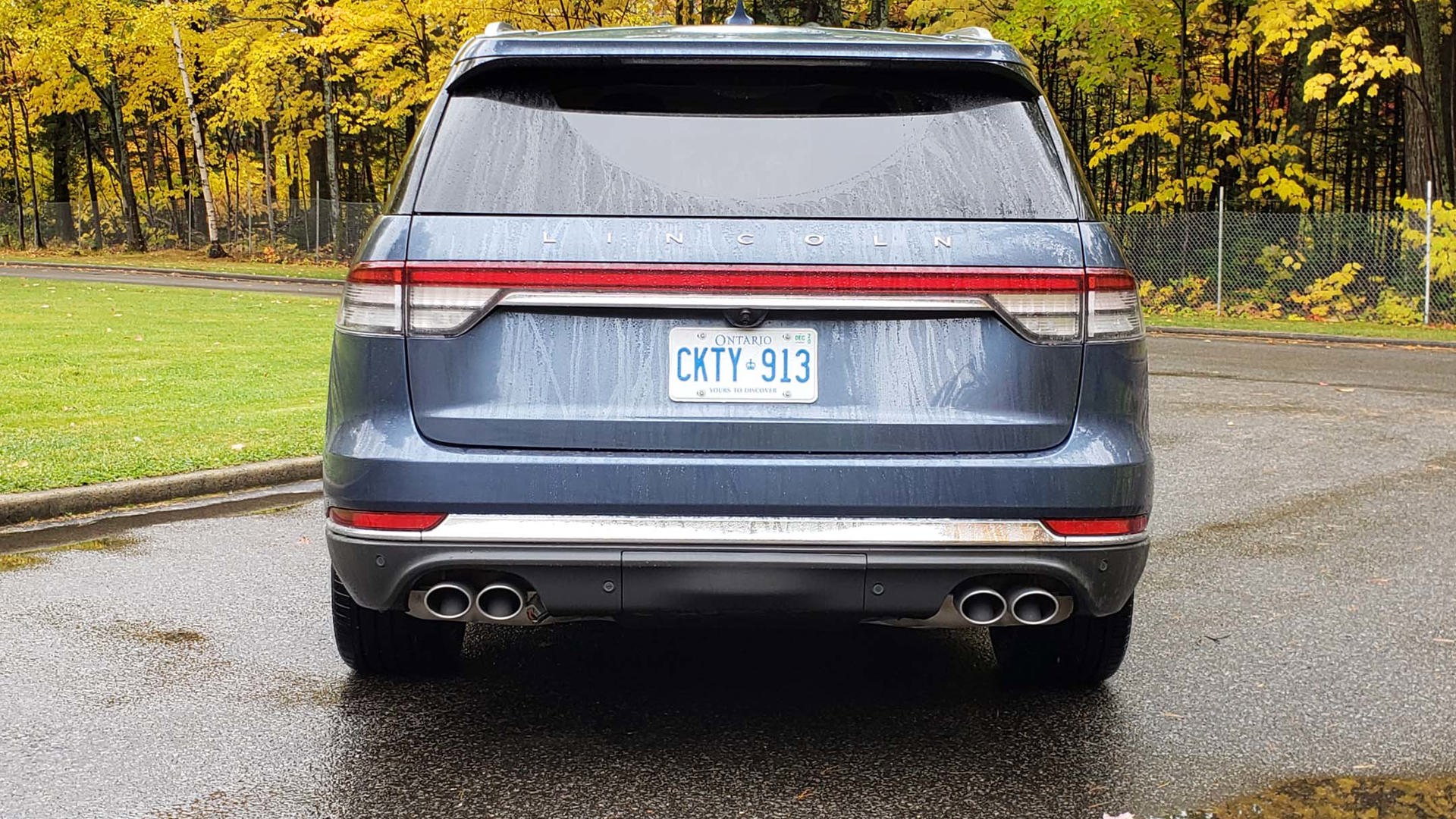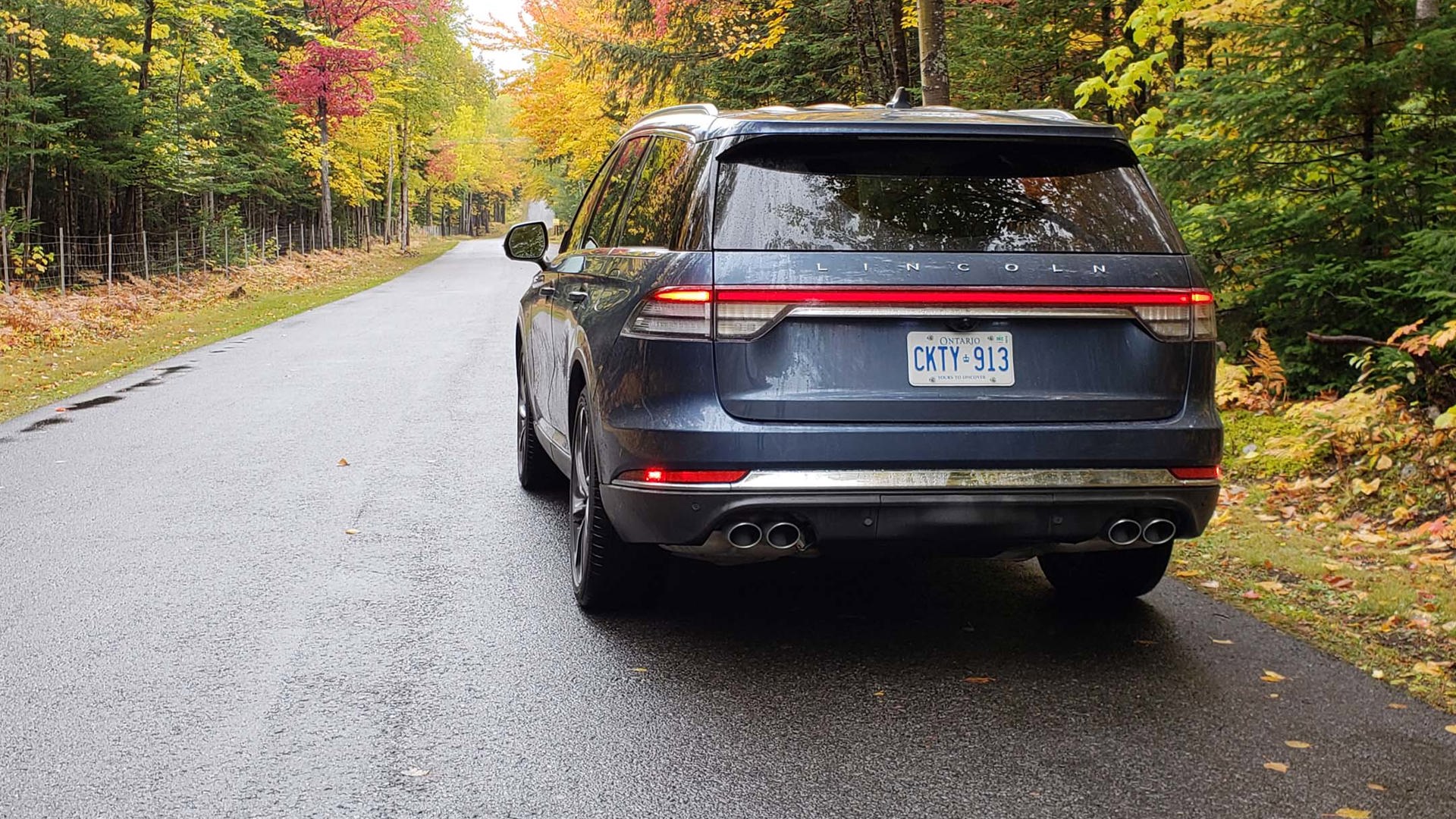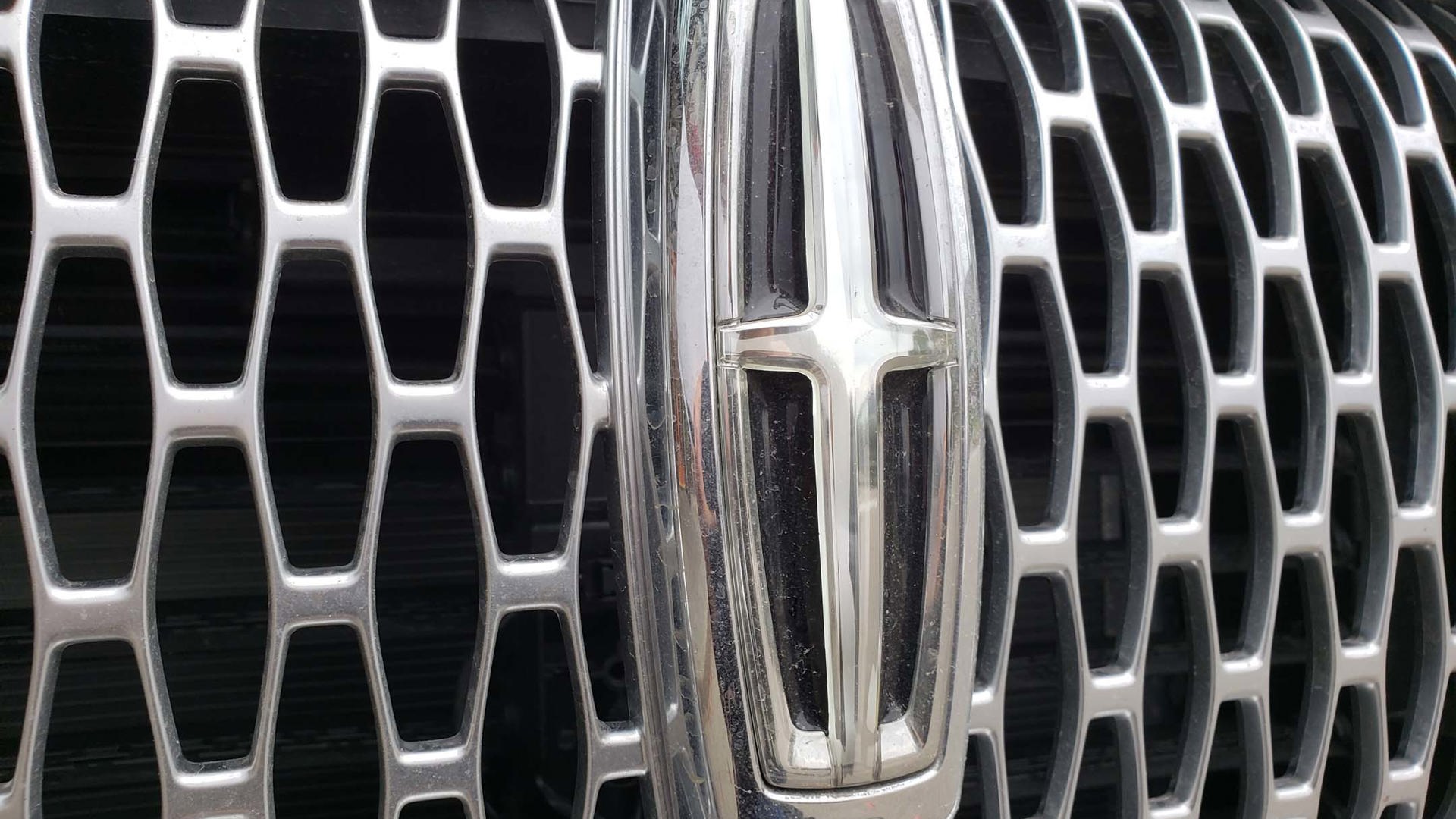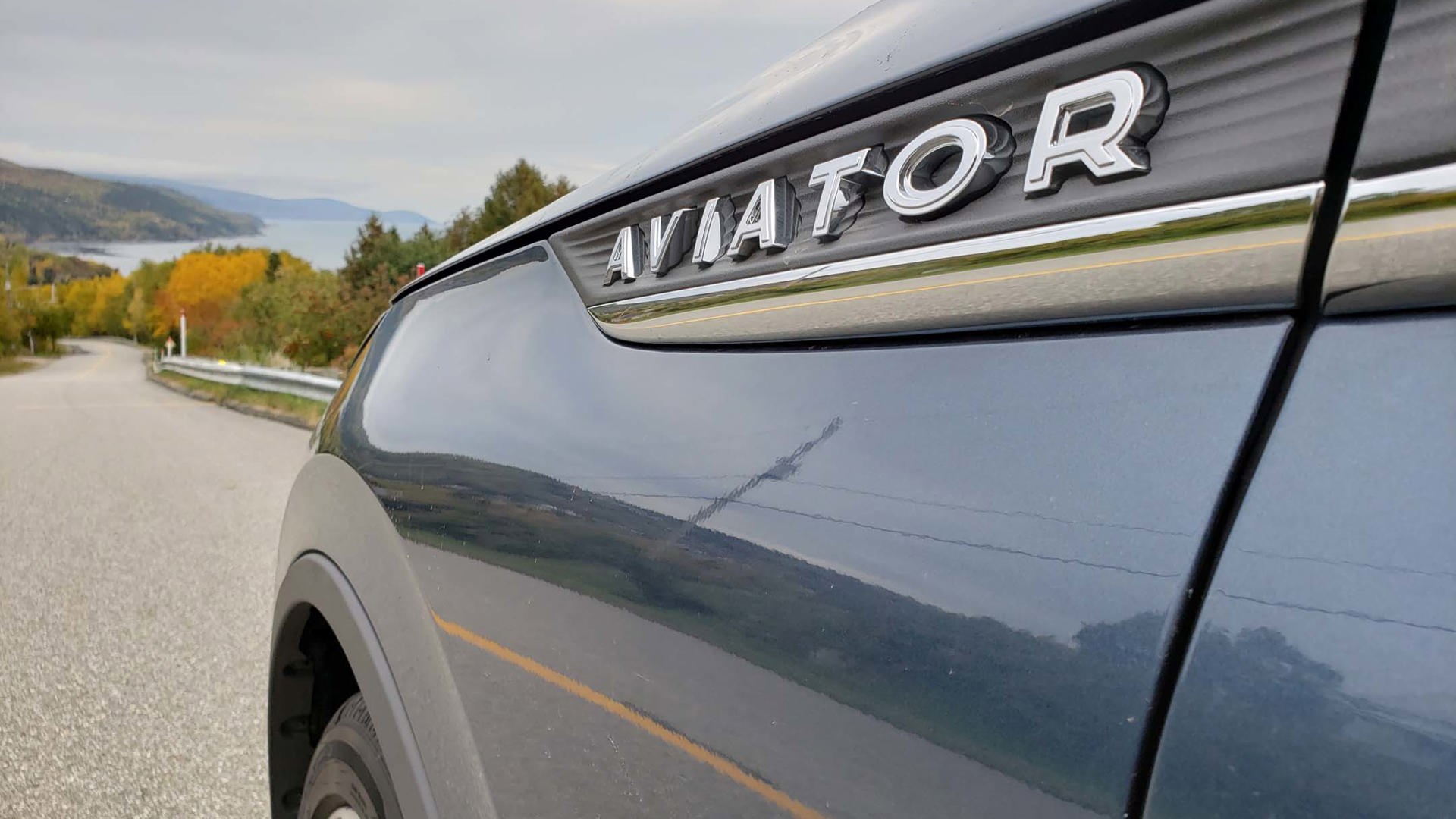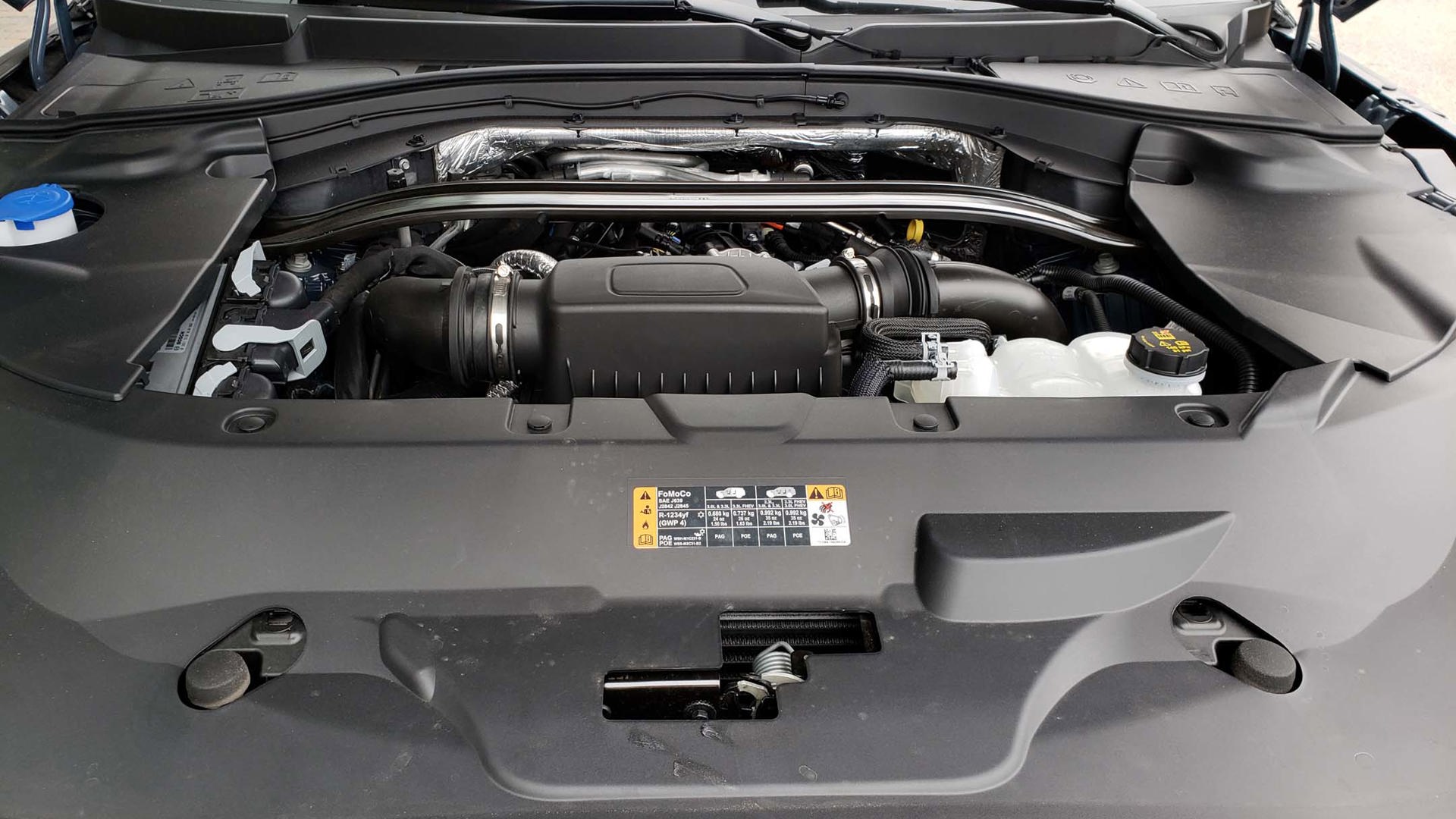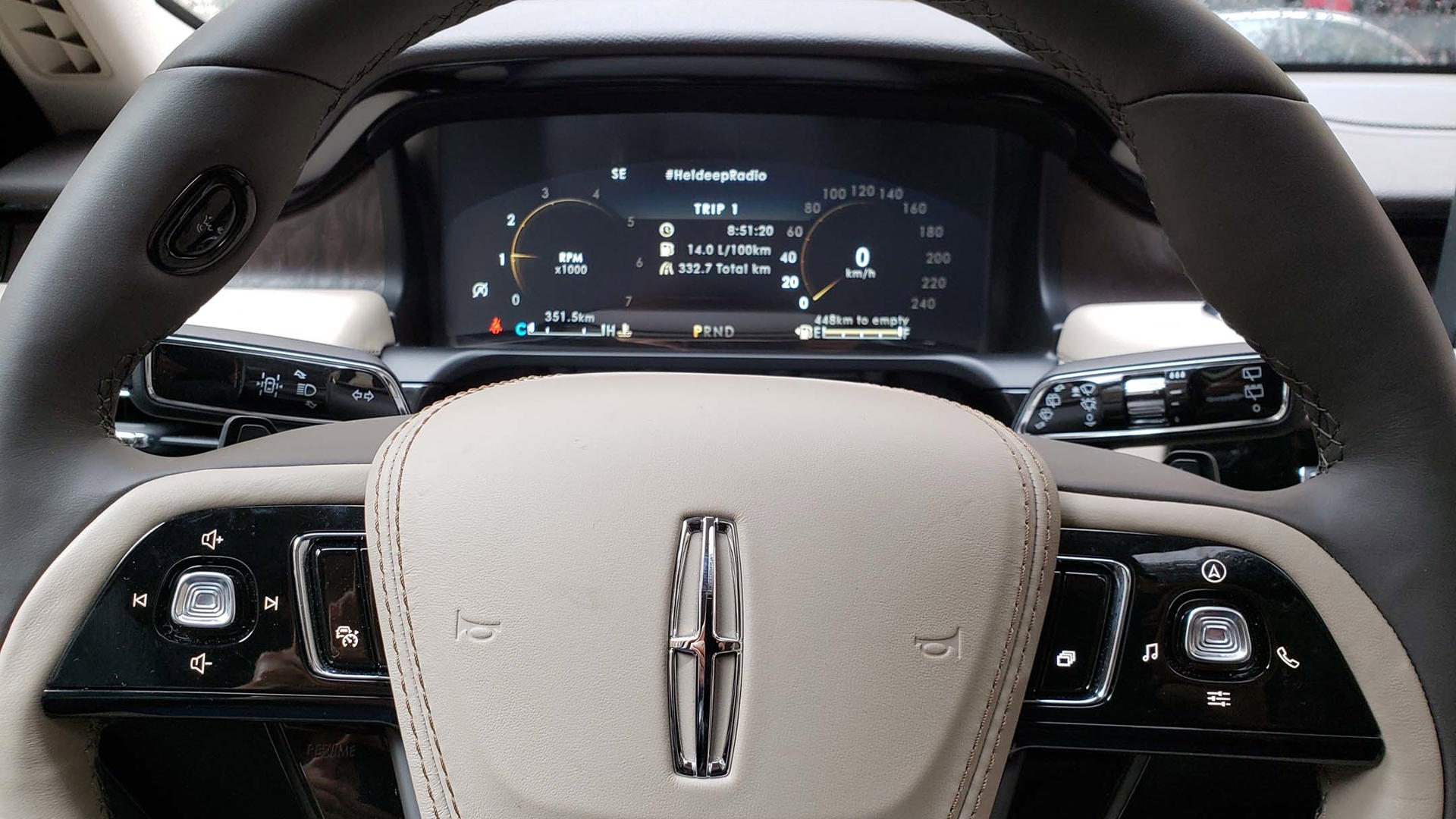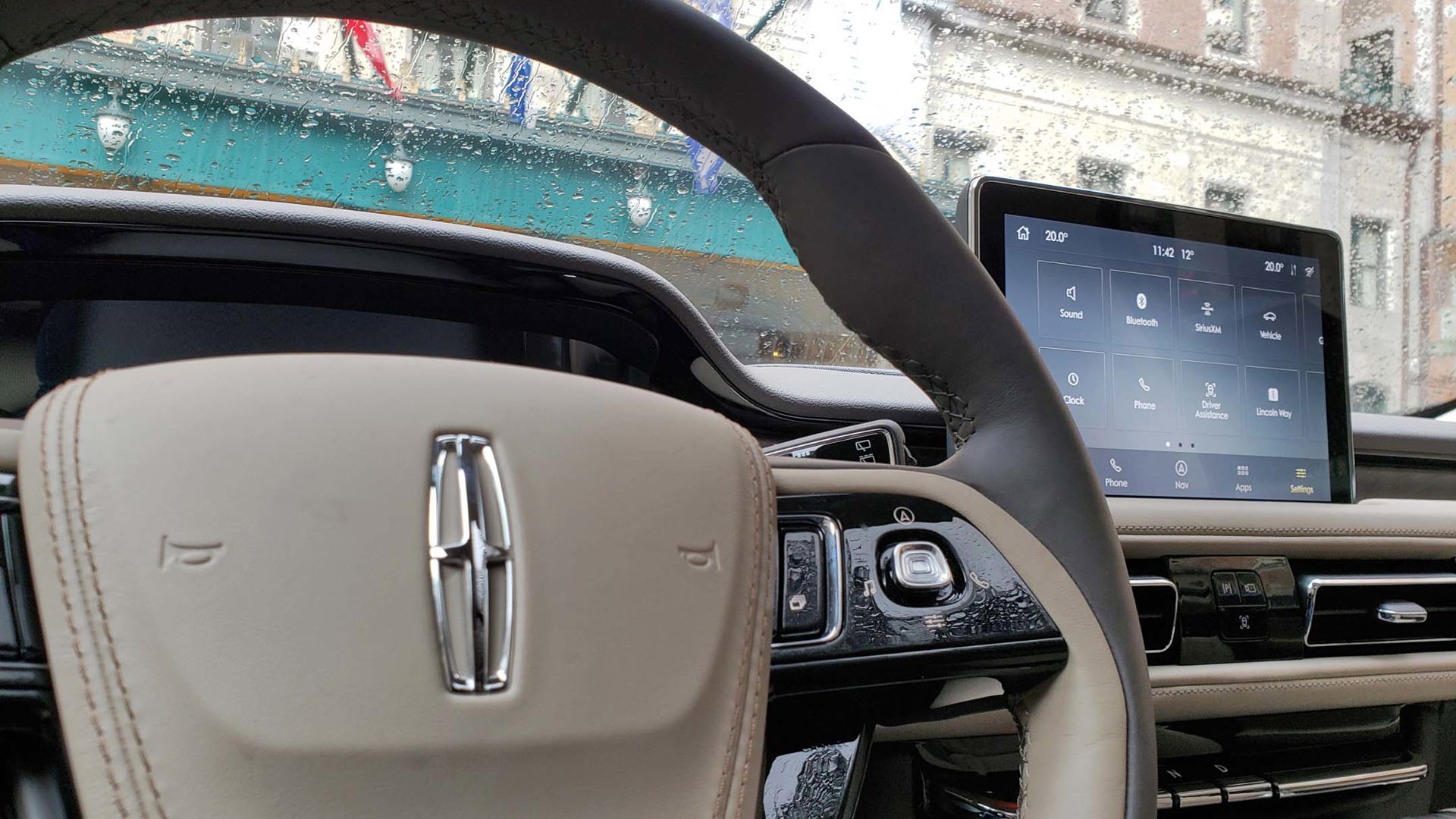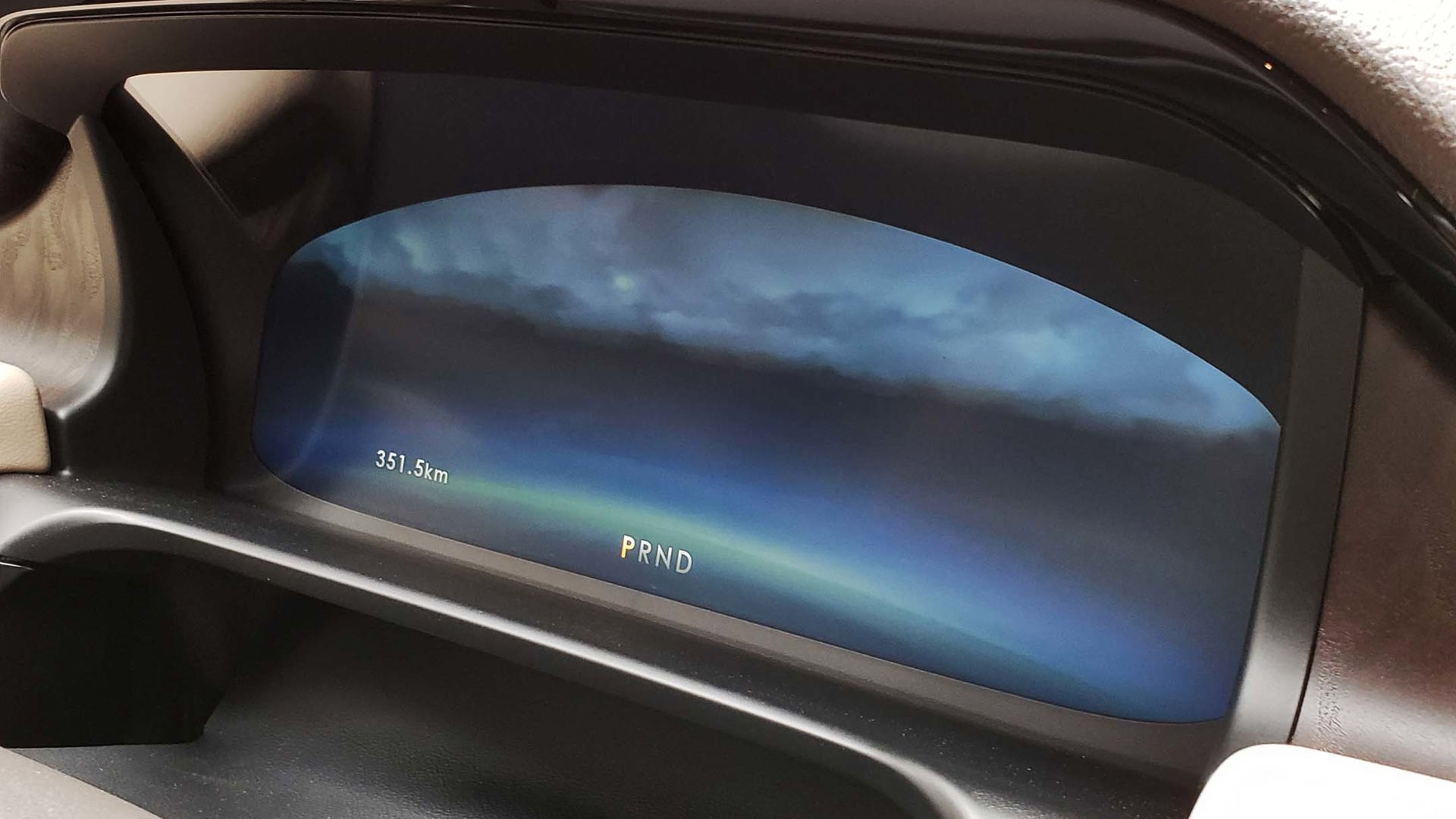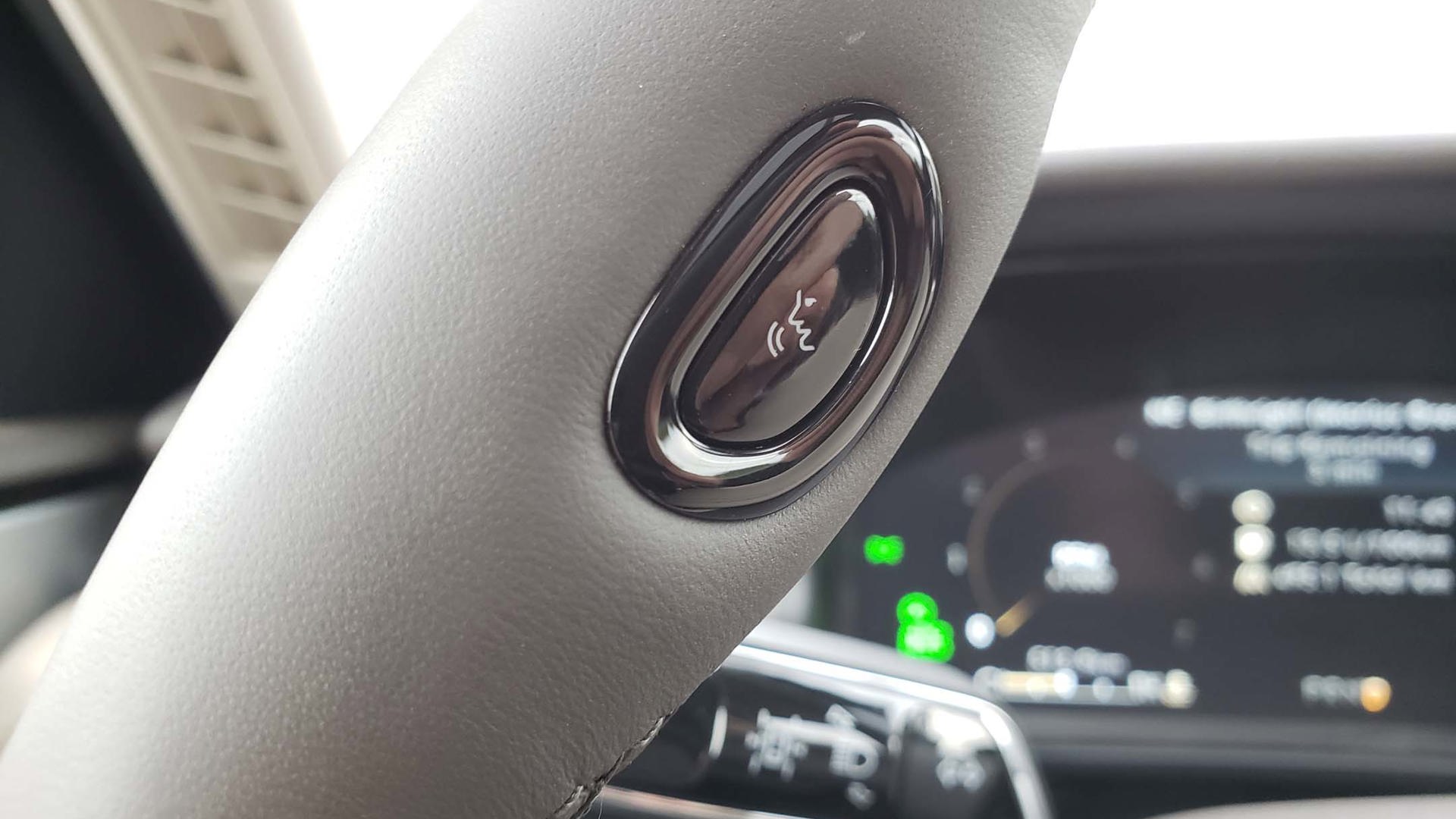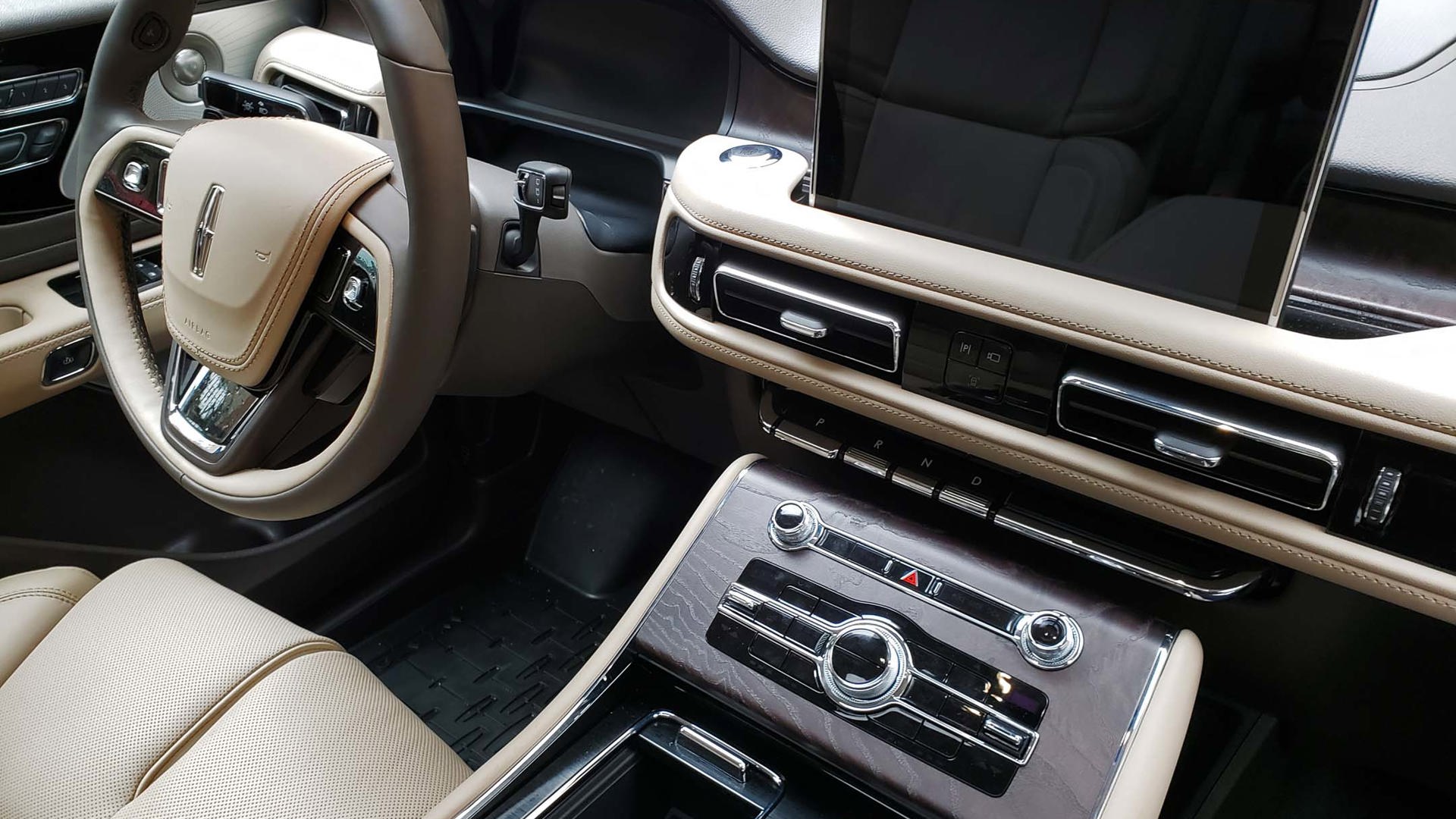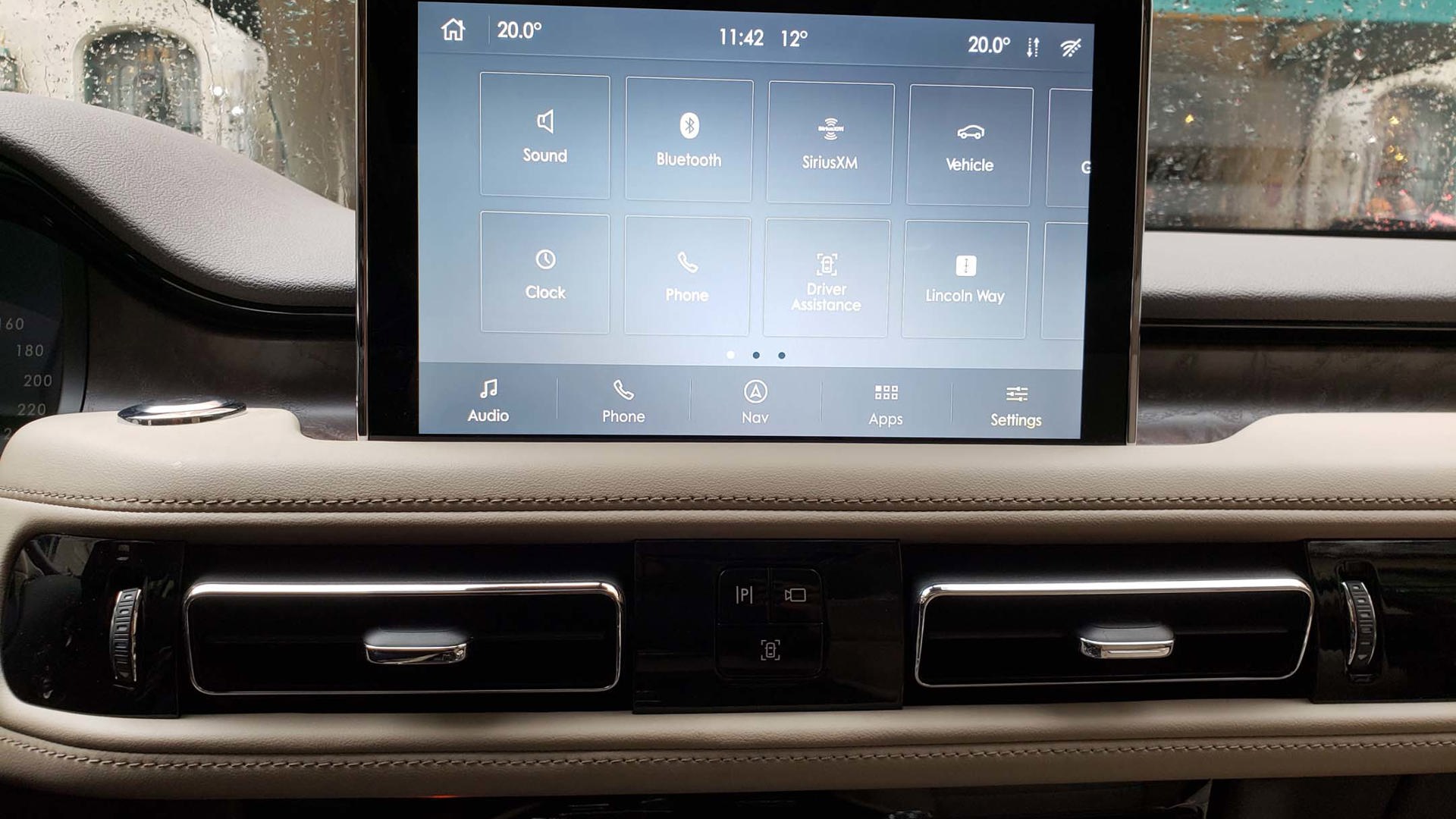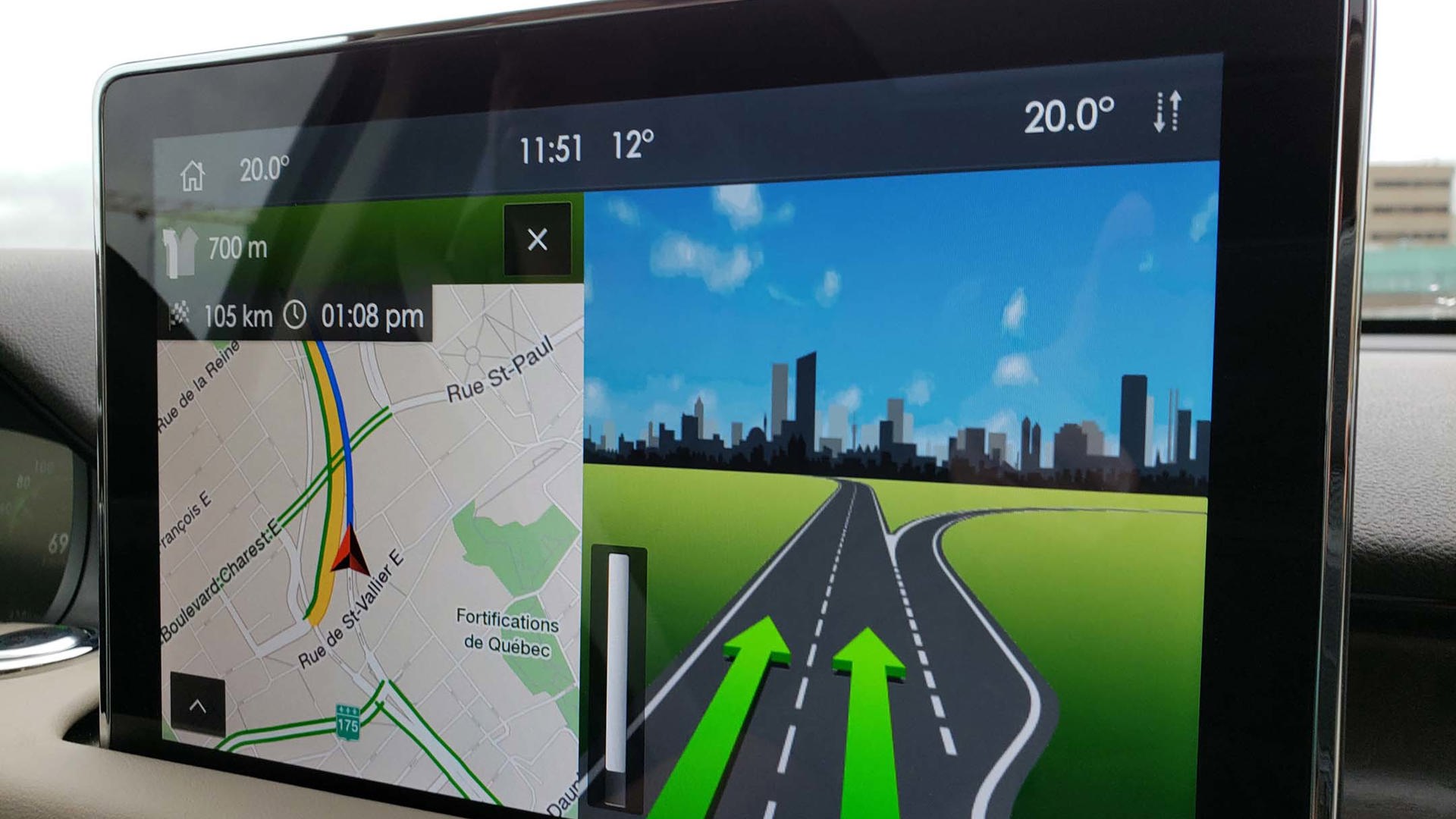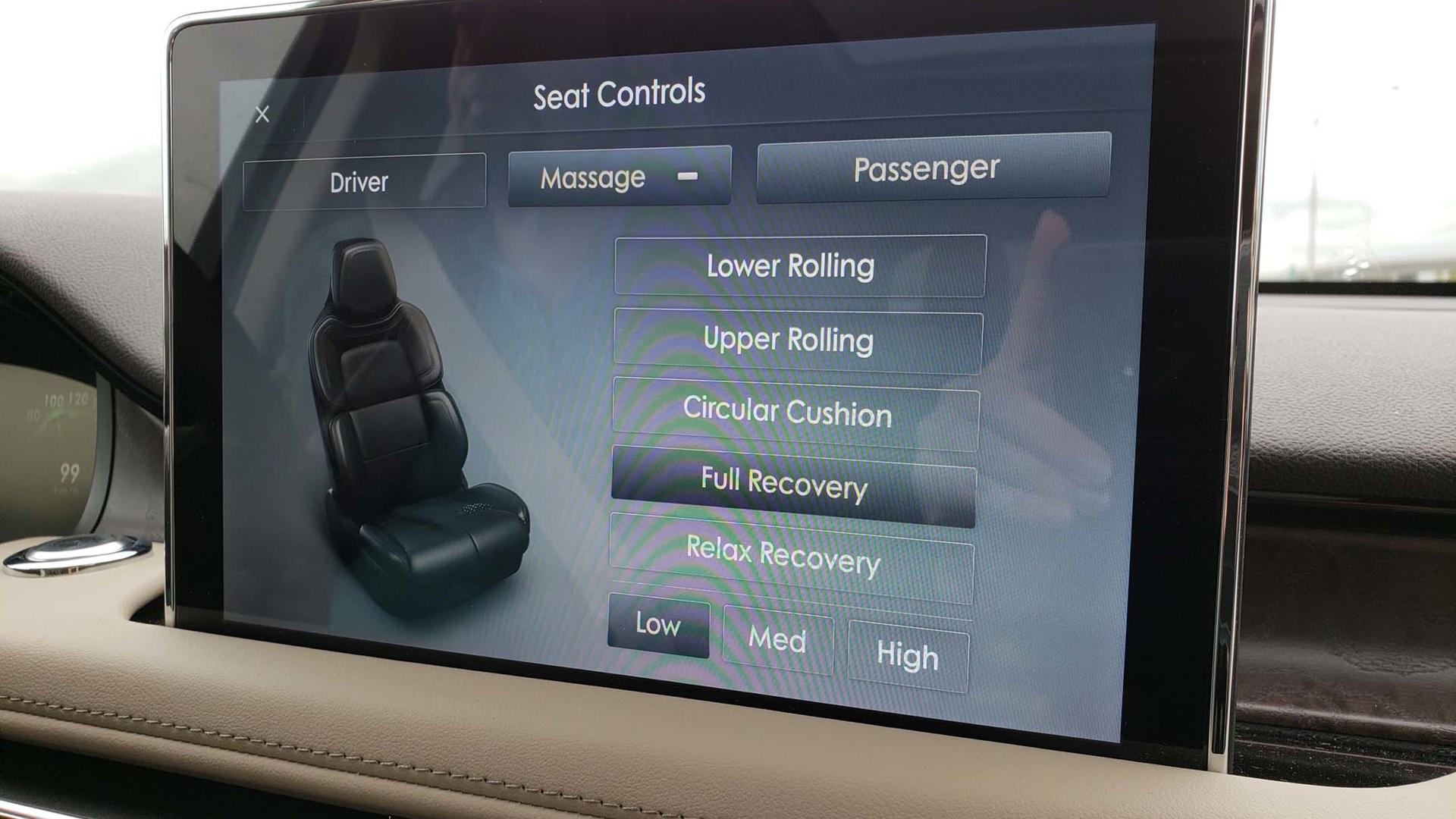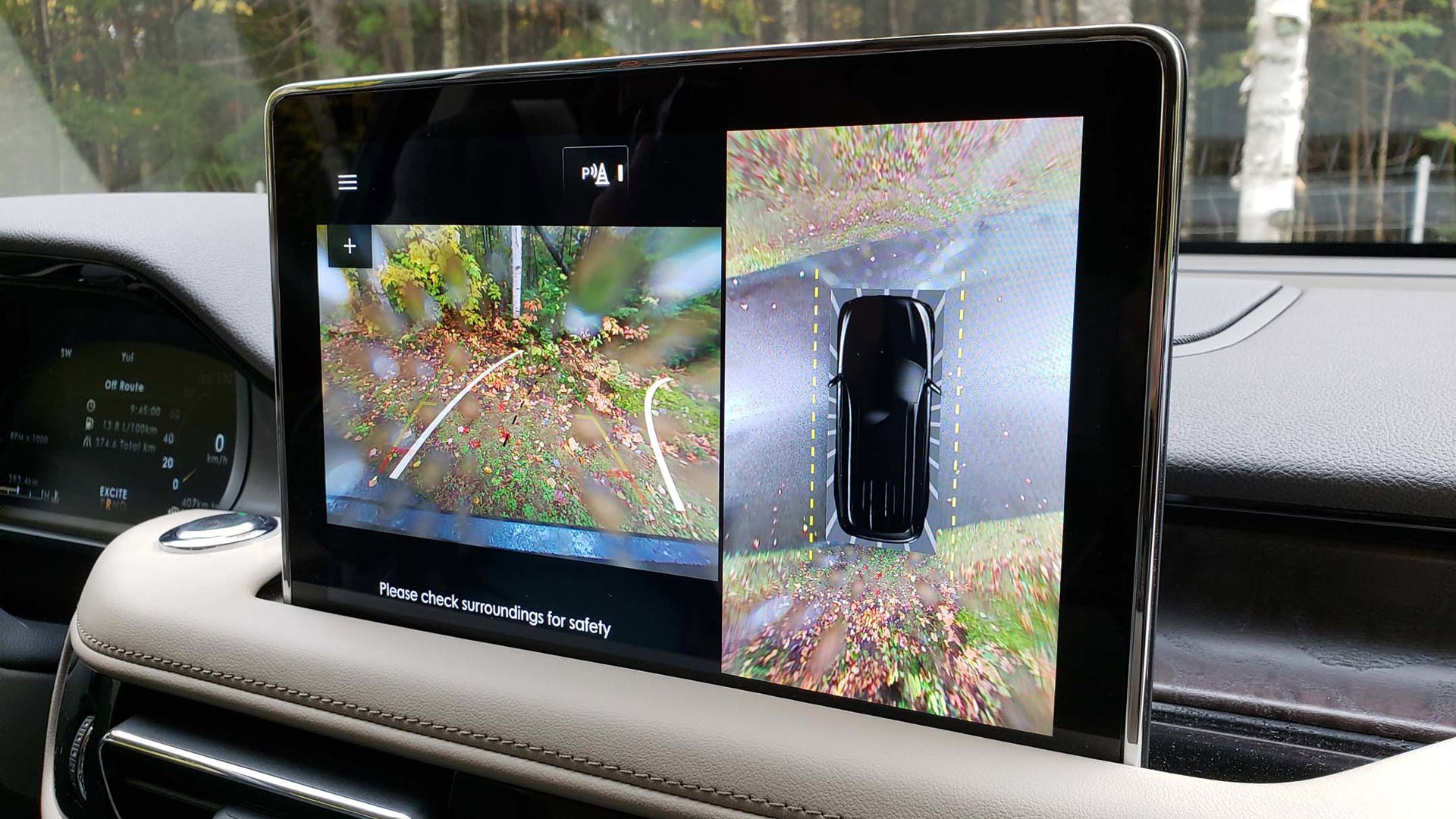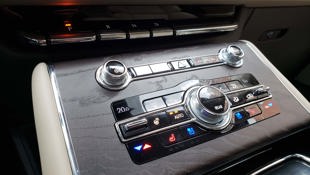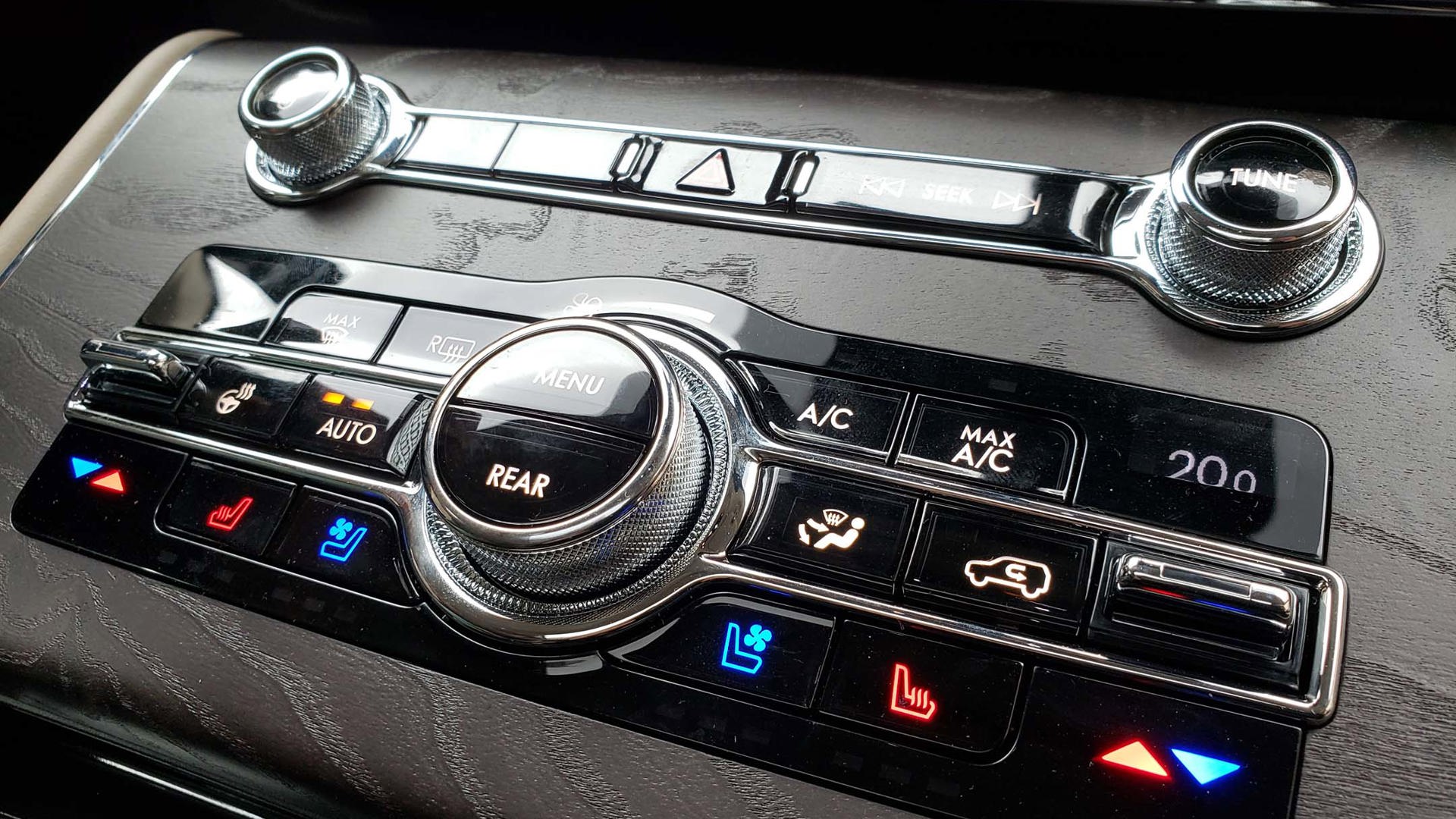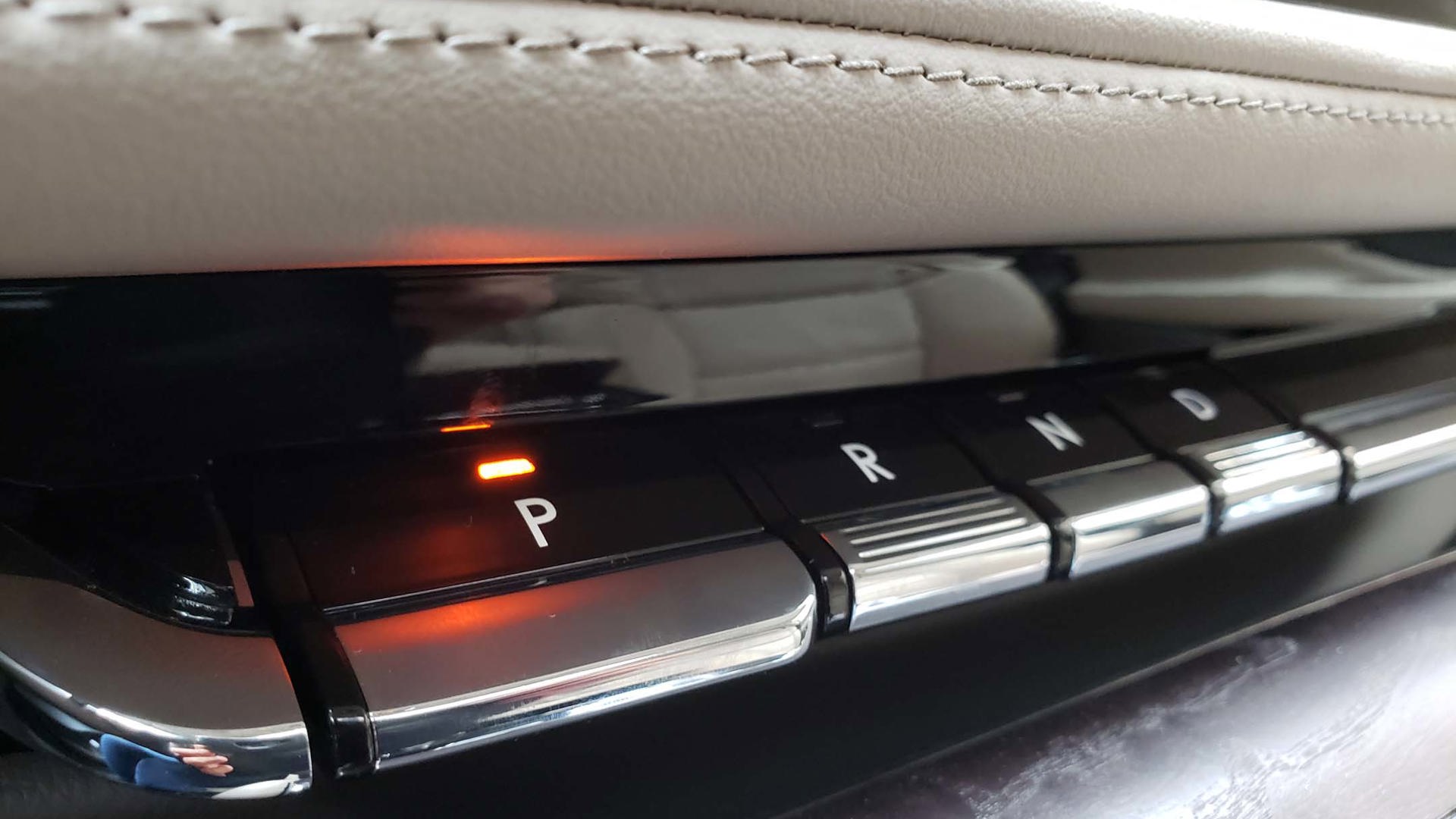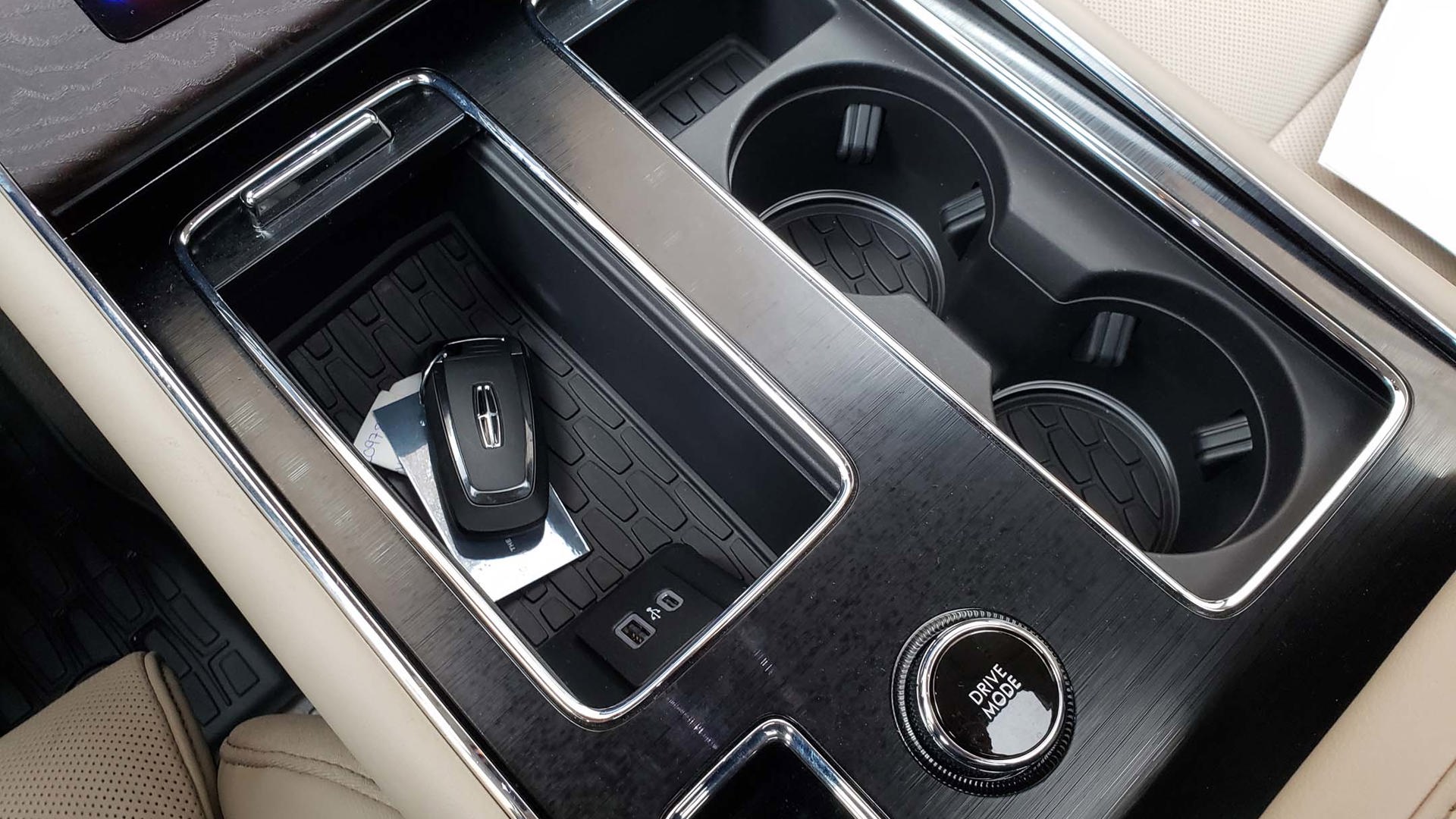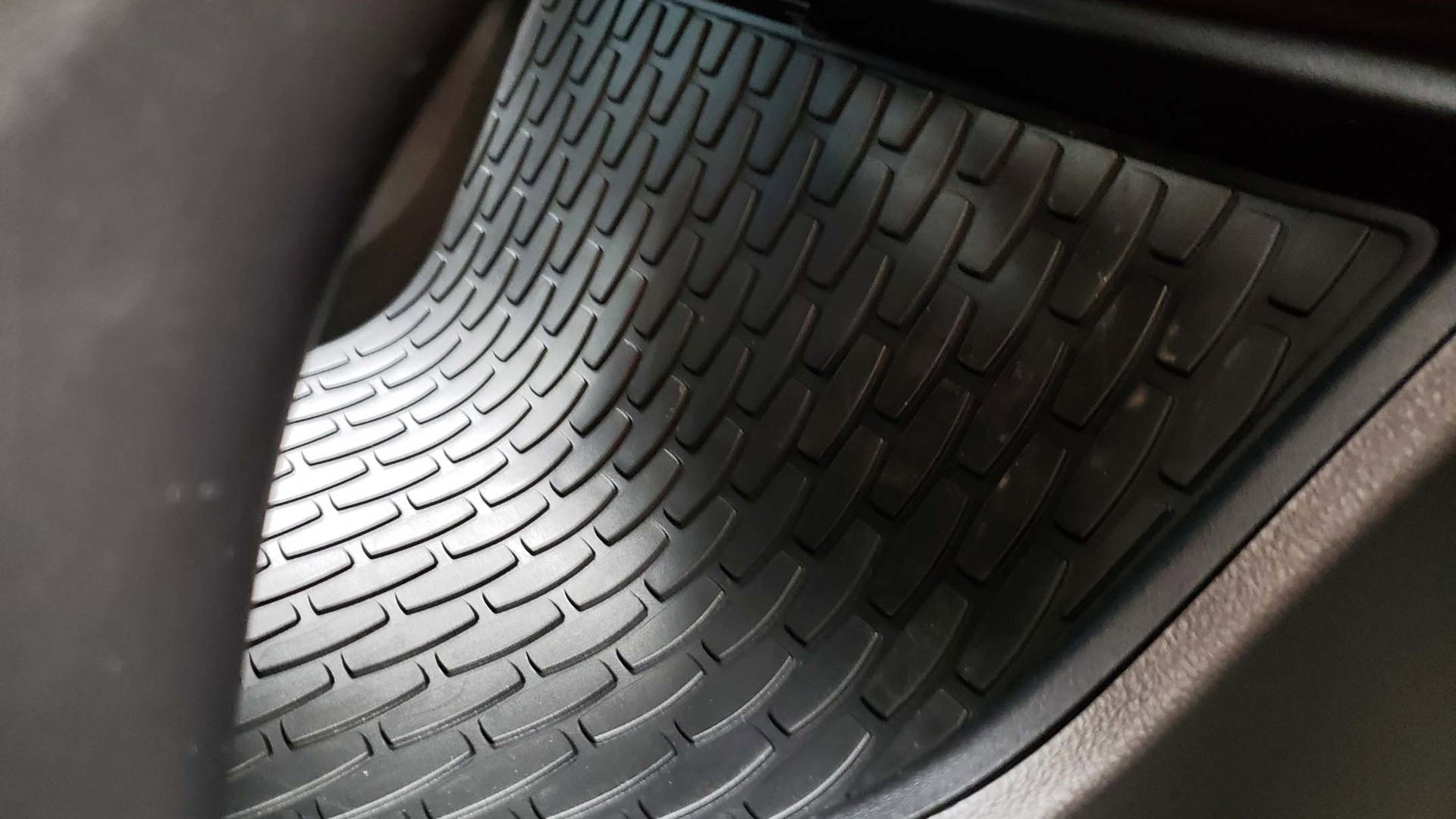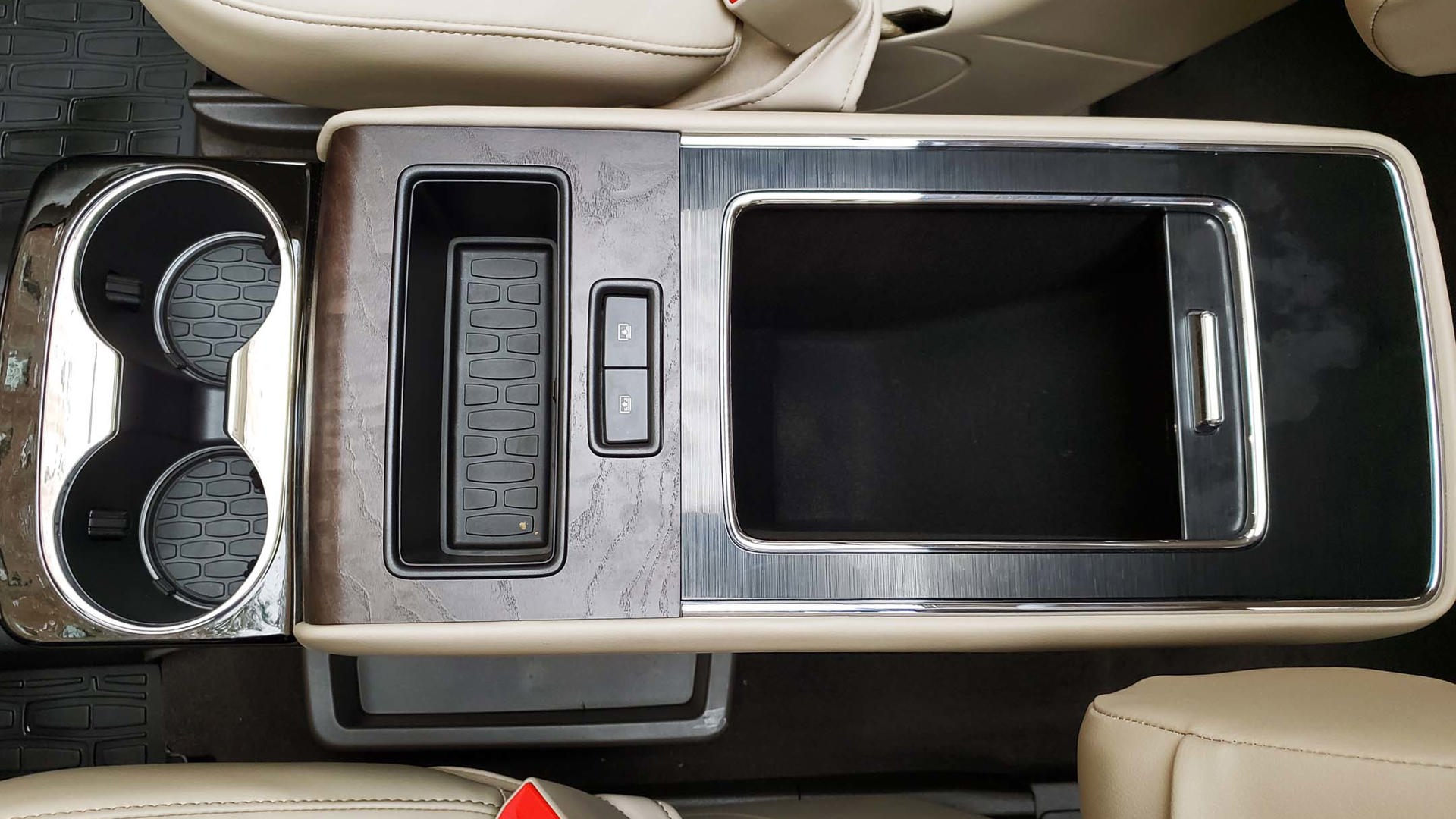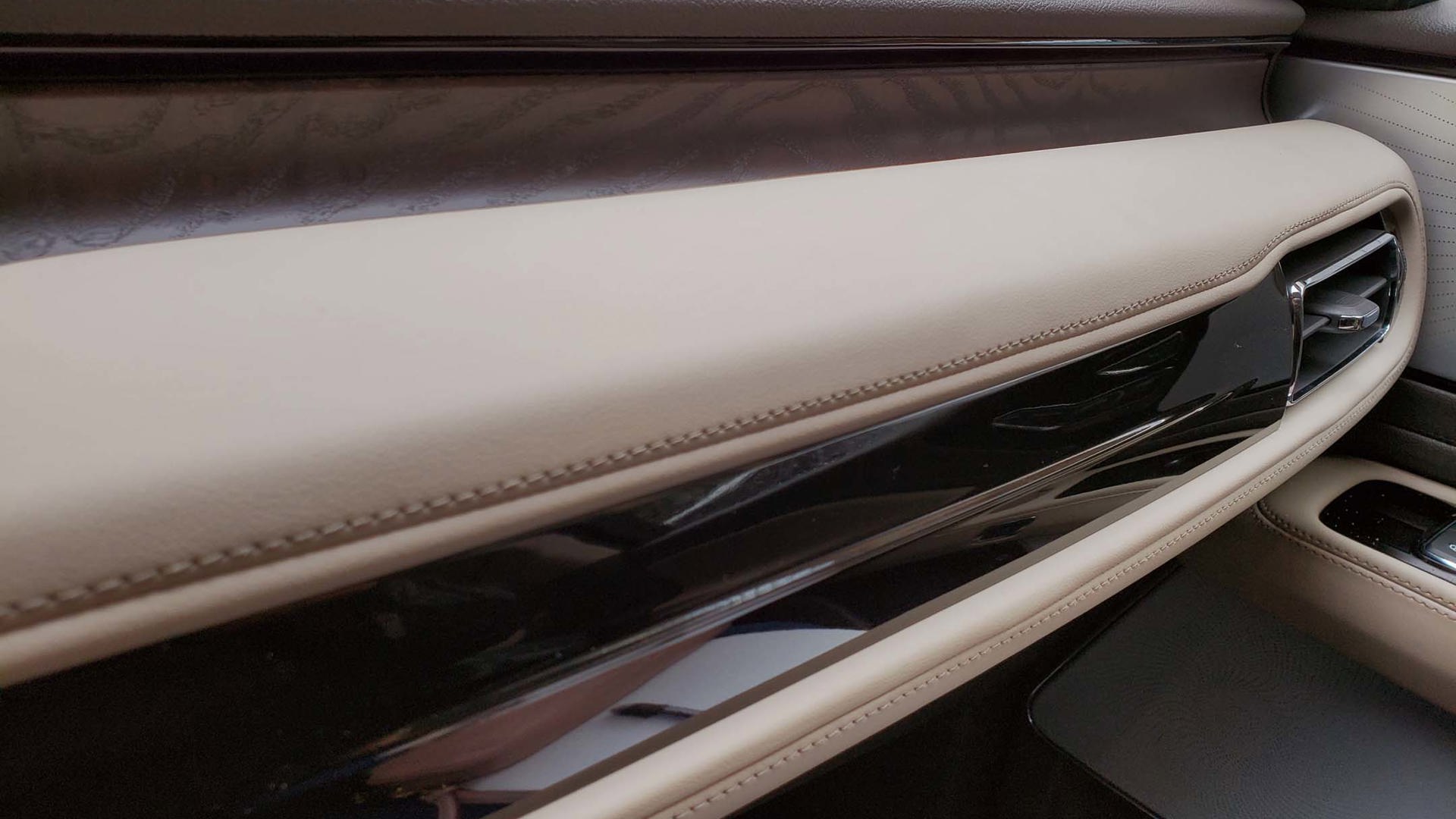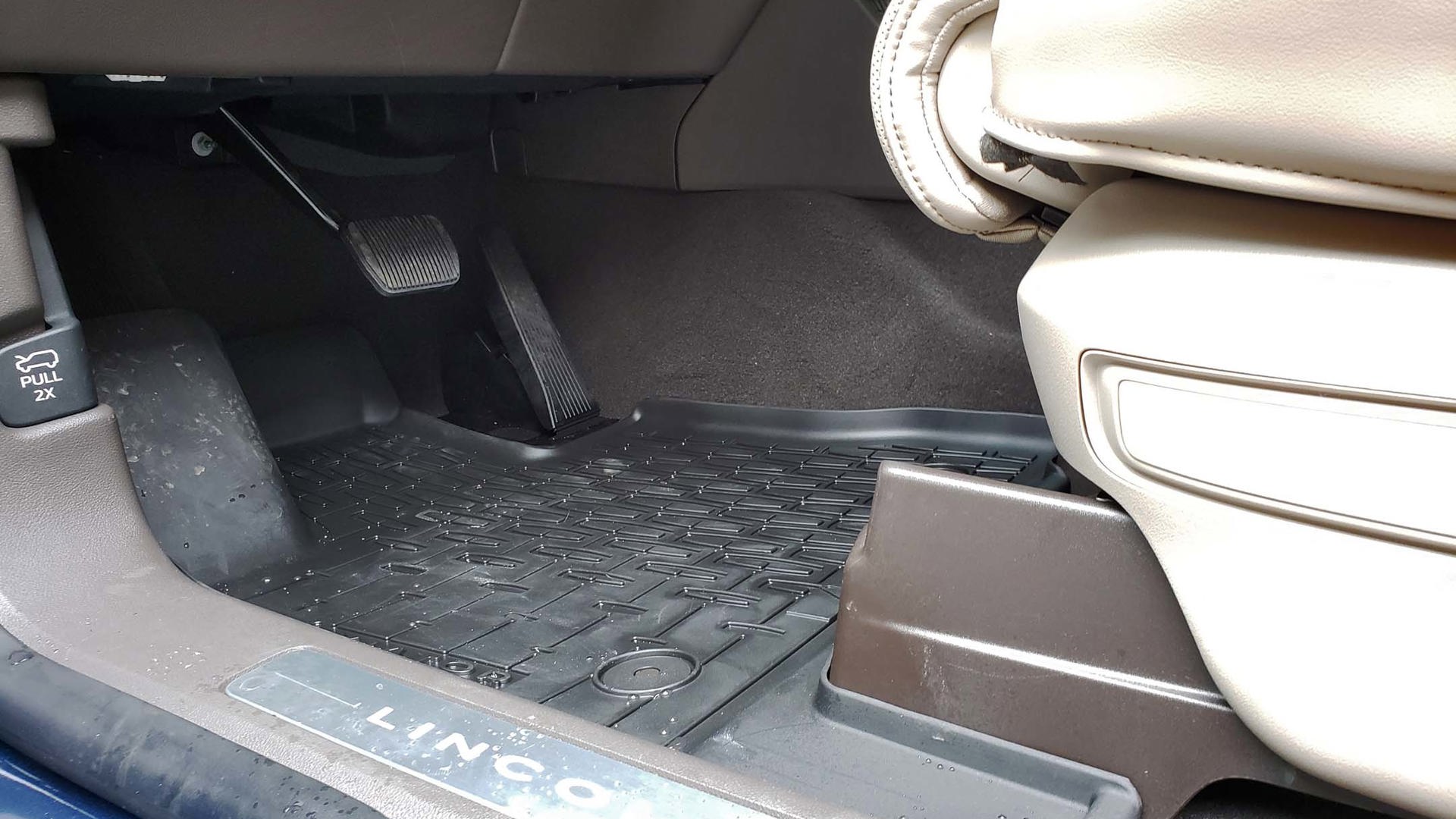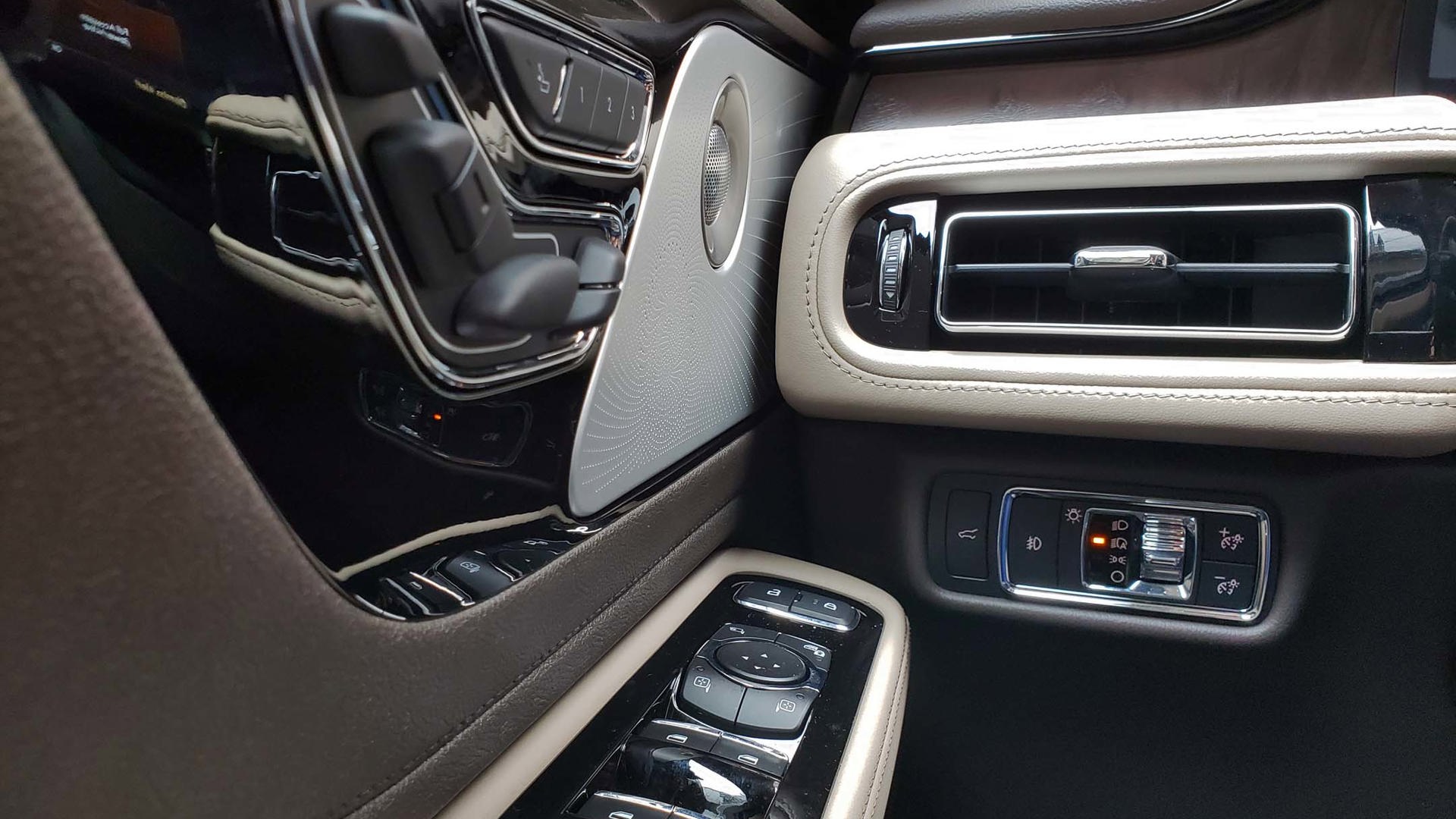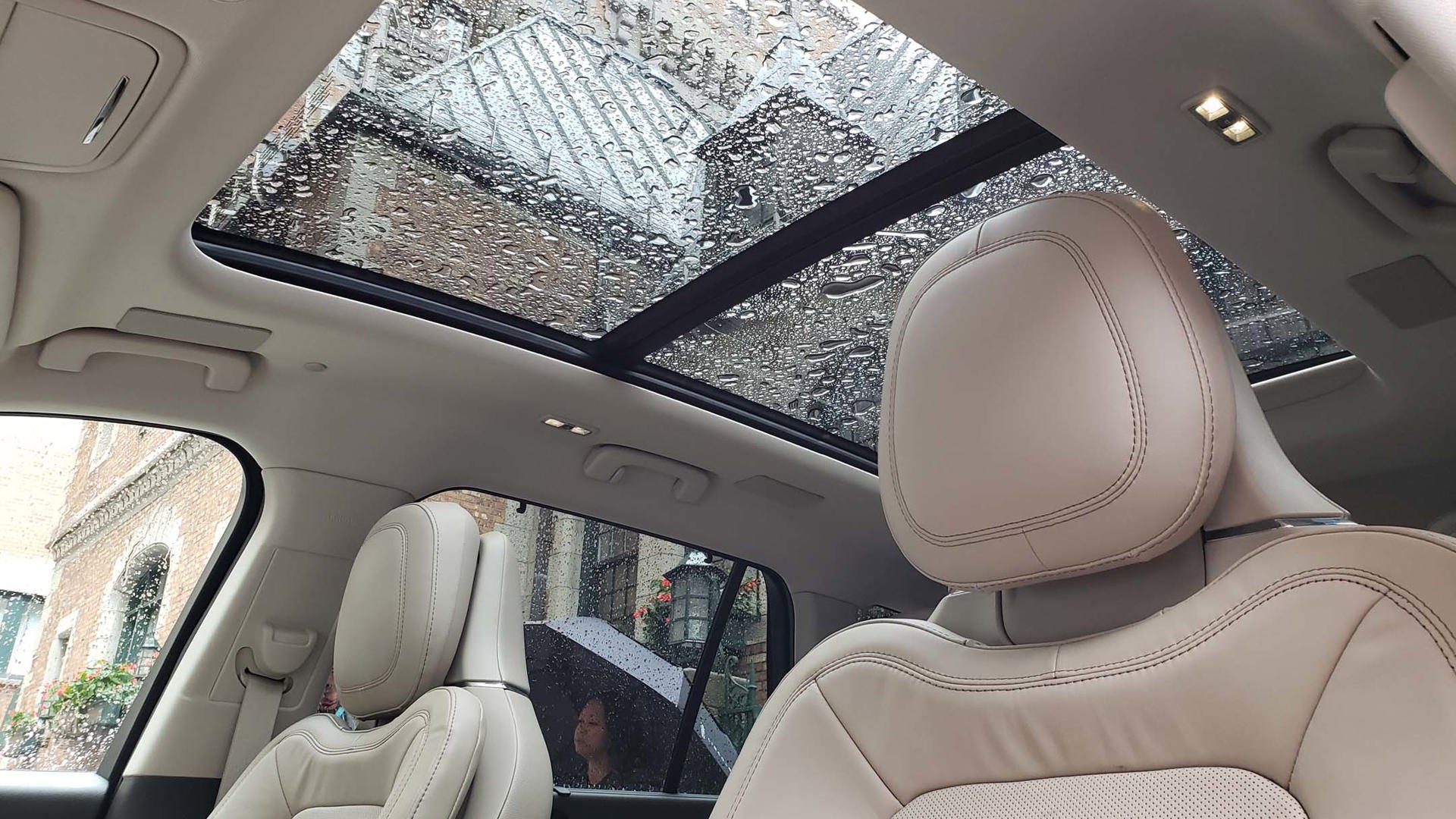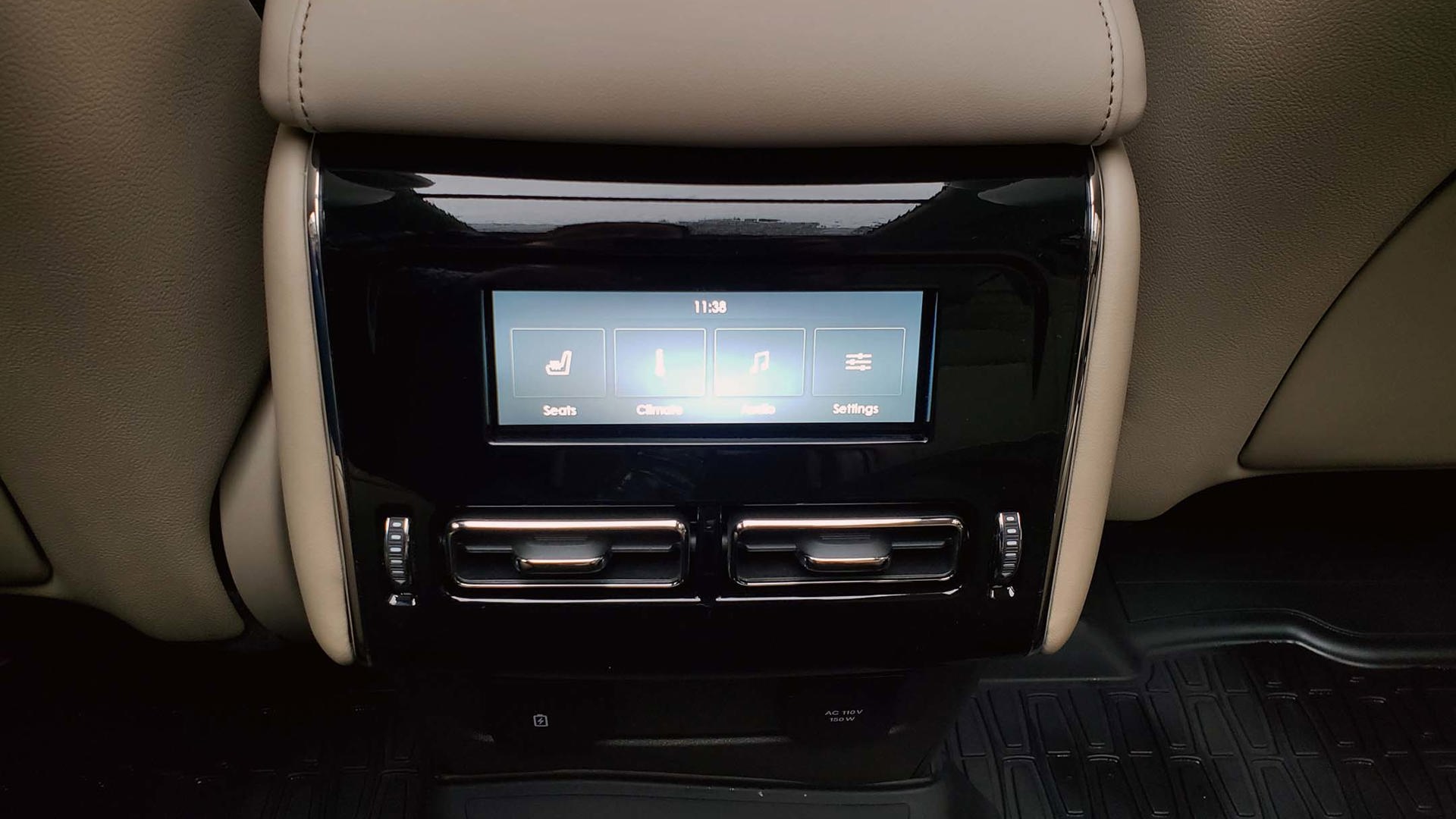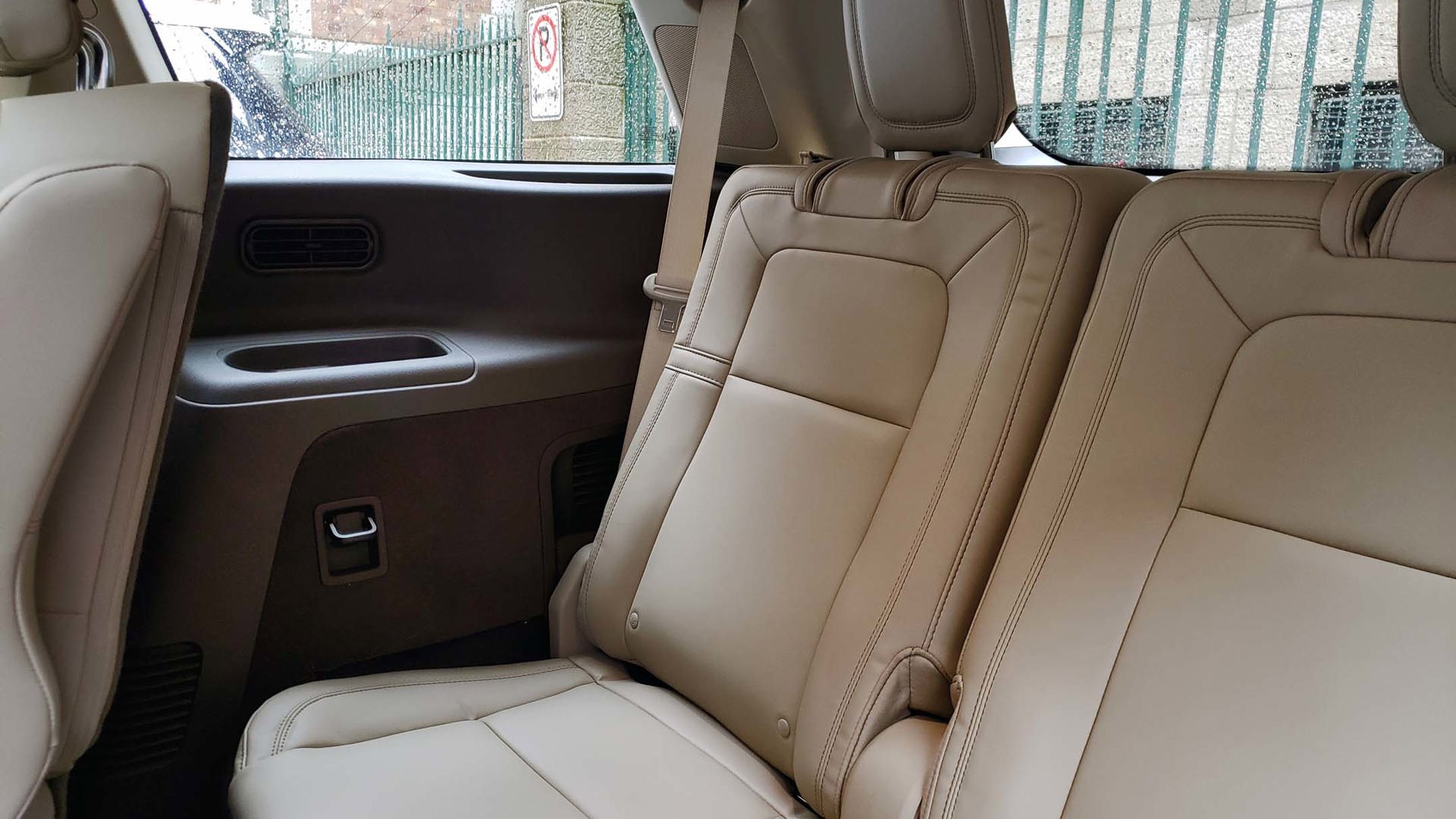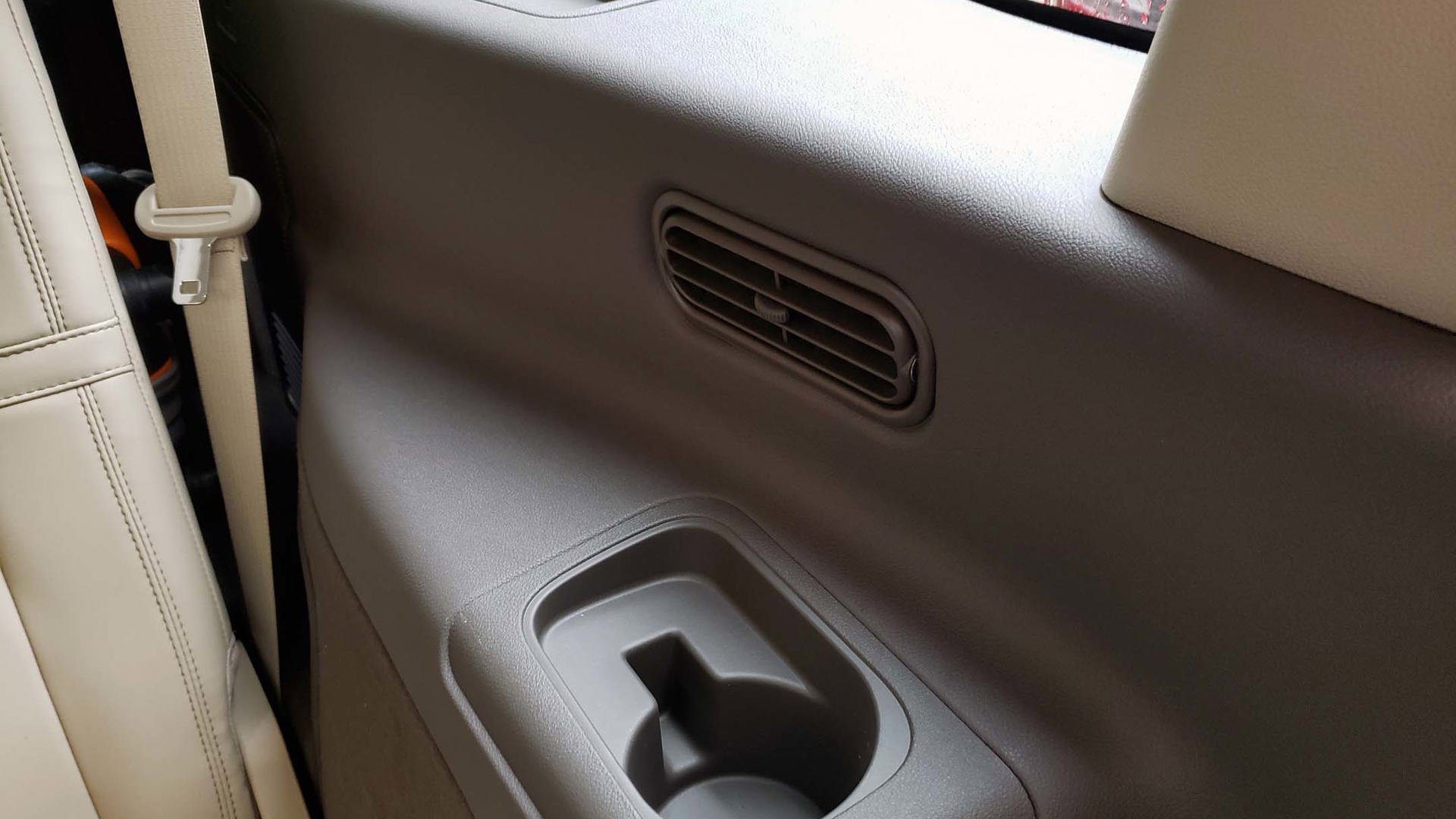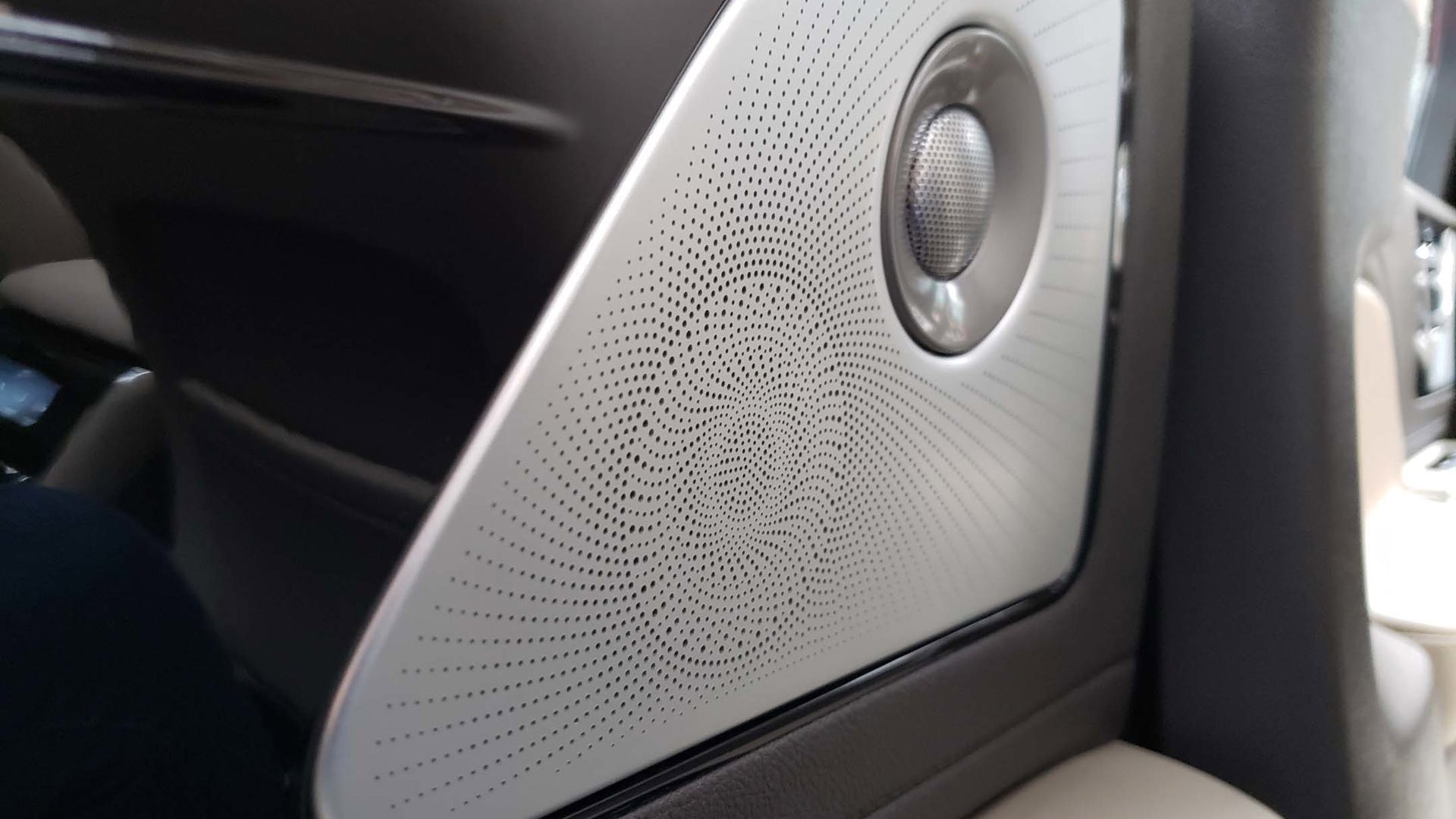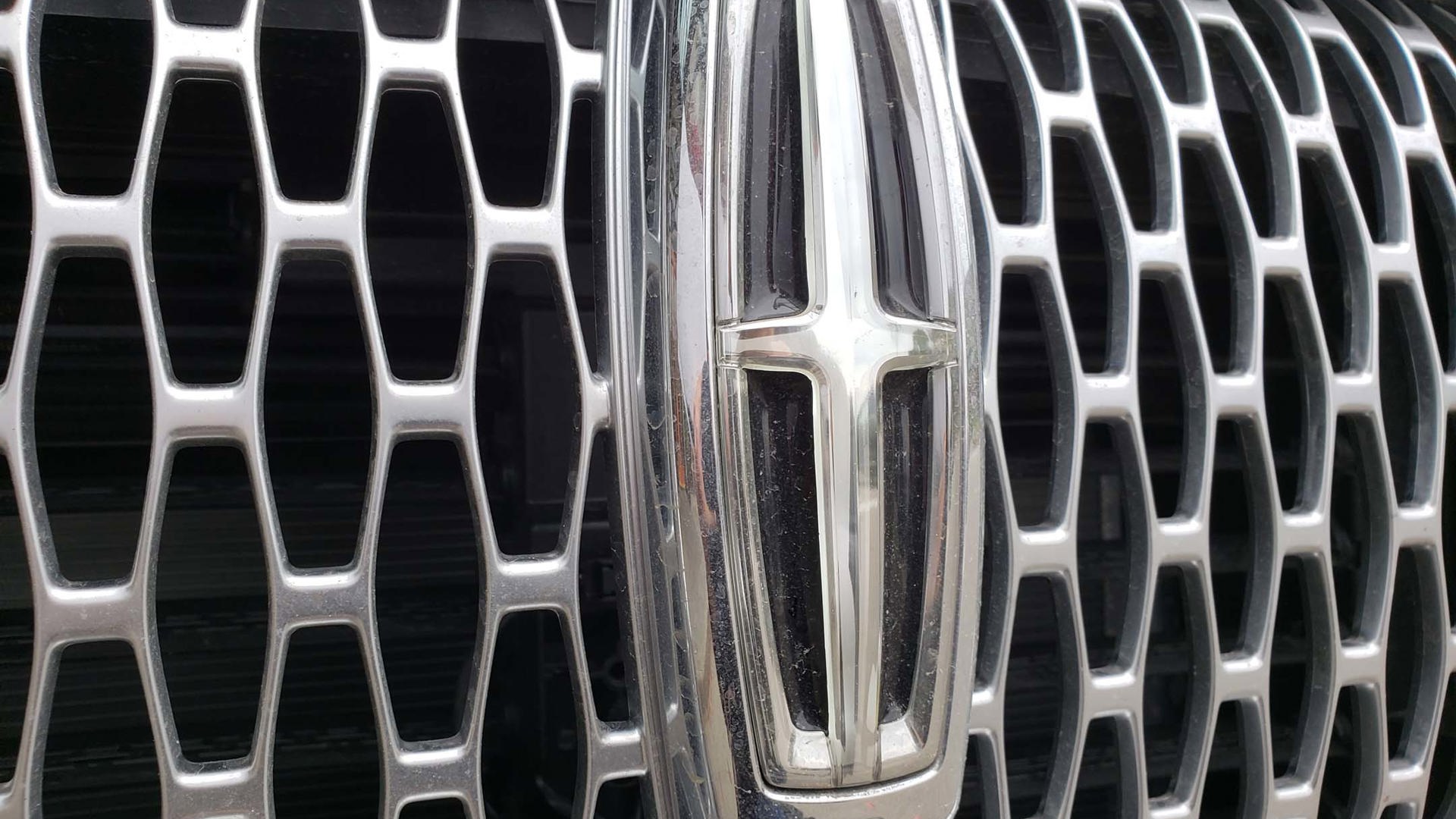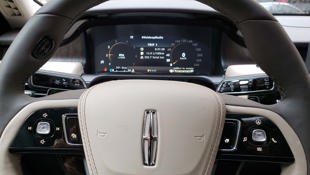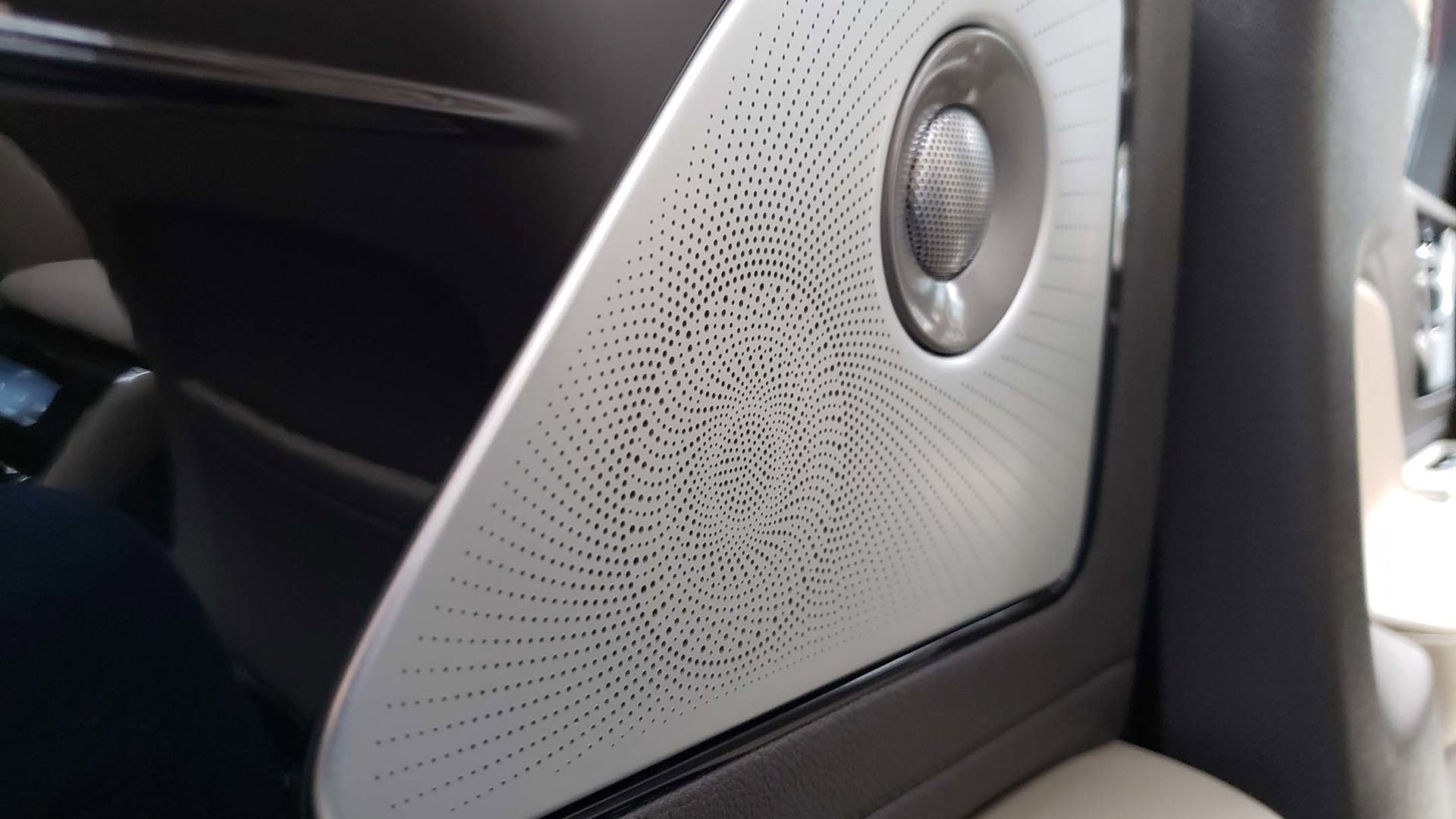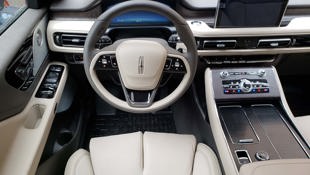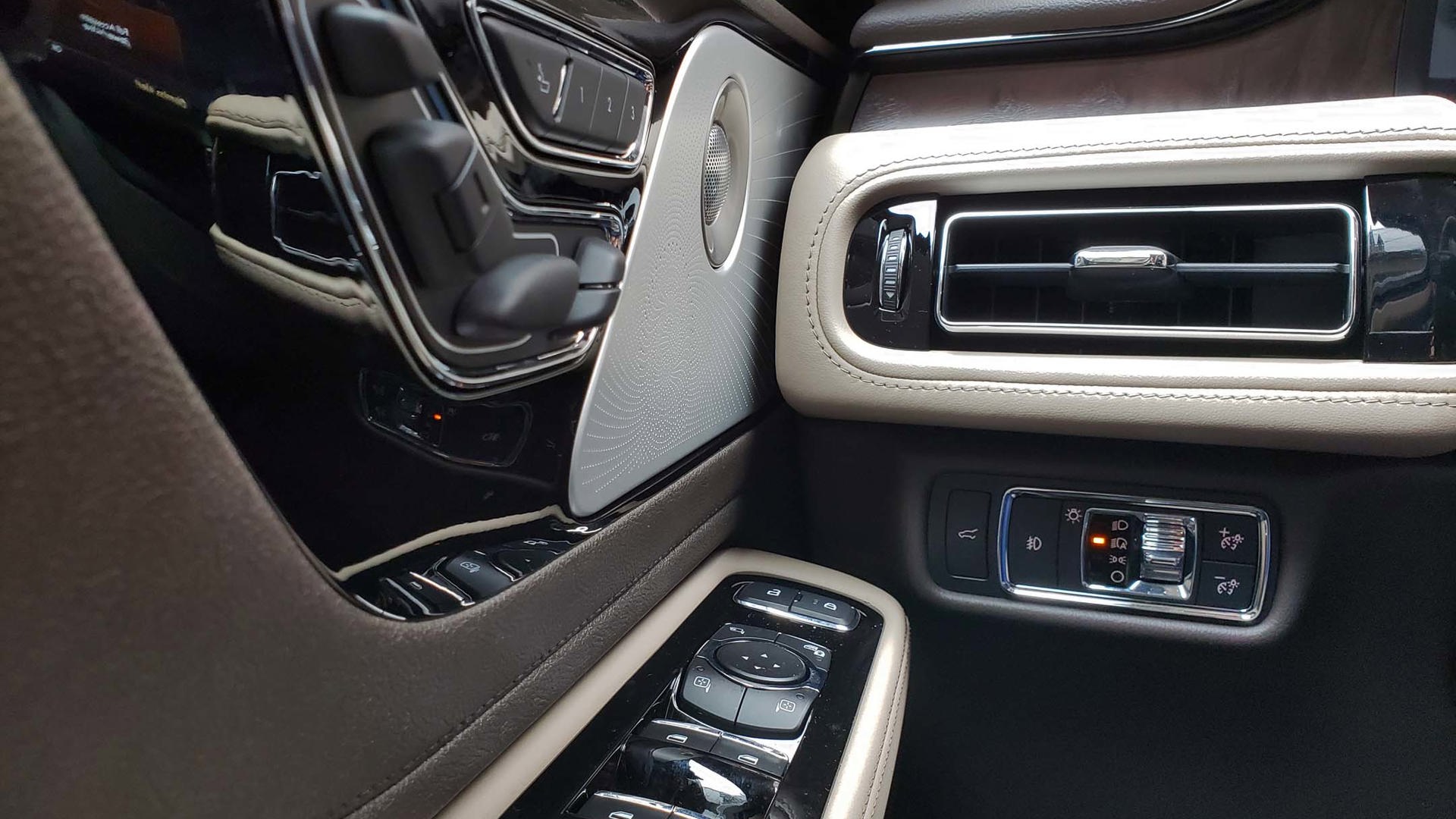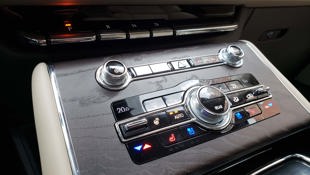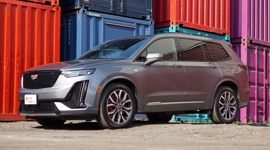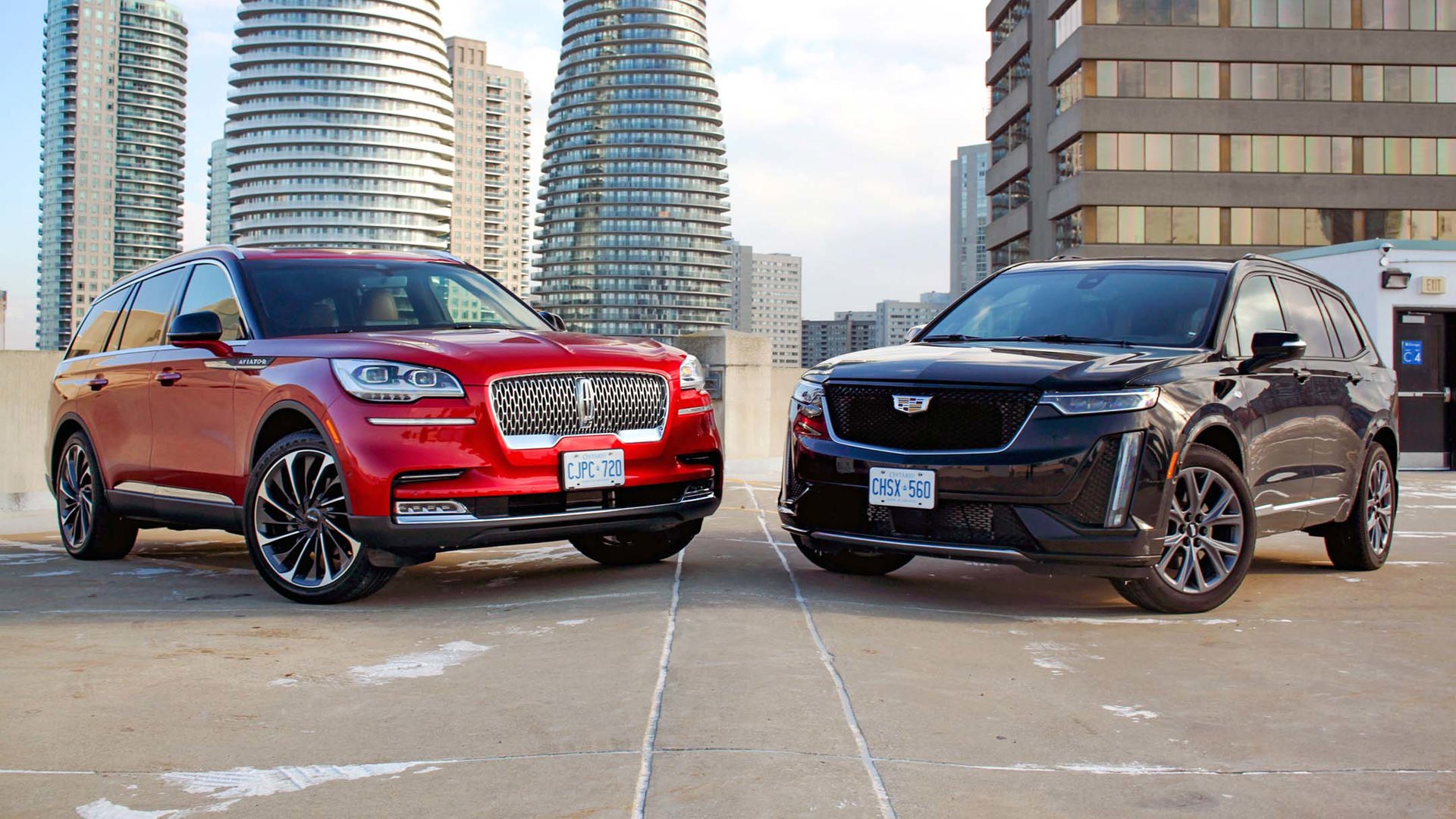And just like that, almost overnight, there are options for people who want a well-appointed luxury three-row SUV that’s not German.
Is that a lot of qualifiers? Sure. But it describes a surprising number of people: those who need to move six to seven occupants, who are at a stage of life and success to be able to spend more on finer things, and yet who find that certain brands don’t fit with how they want the world to see them or how they see themselves.
Not so long ago, there was really only one direction to point these people, and that was the Volvo XC90. Neither the Lexus RX L nor the Infiniti QX60 can match it in aesthetic or technology, and the closest things that American luxury brands sold were full-size, body-on-frame goliaths.
Then the Cadillac XT6 landed, and suddenly there was a discussion to be had. At roughly the same time, the Lincoln Aviator arrived as well – and holy wow, did I ever not see this one coming.
The 2020 Lincoln Aviator is a head-turner, designed to be more of a serene escape than a performance-oriented beast – though the numbers, up front, tell a different story – which positions it as the closest competitor yet to the XC90. And it’s made all the better by the fact that you don’t need to wade through alphabet soup to remember its name.
It’s not perfect, and there are a few things that some of its competitors are still doing better. But the game has changed dramatically in this segment in a very short time, and in many ways Lincoln’s first pass on the Aviator drops it right toward the front of the field.
Low-key Luxury Looks
Lincoln says that its designers, wanting to play on the aviation theme, styled the roof line like a jetliner wing and the massive optional 22-inch wheels like turbines. I’m not so sure I follow that all the way through, but what does speak to me is the tastefully done floating roof line, the extensive use of chrome, and the clean and powerful lines across the front fascia and hood. There’s no selecting one design language over another here; you either like it or you don’t, and that’s intentional as Lincoln attempts to simplify its lineup and ordering process.
The same story goes on the interior, where finally, the black plastic that has plagued Lincoln gives way to layers of leather, open-pore wood, and chrome, all of which carry an upscale air with an unmistakeable American touch. Again, there are colour combinations to choose from, but there’s no optioning out of the general aesthetic. Not a lot of people who would buy this car will want to, though. It’s got a few more buttons and has more going on visually, but it's the closest thing to the XC90’s minimalist and calming interior that’s been released in a while.
The jury’s still out is in the placement of the gear selector, however. It’s positioned under a band of leather trim below the infotainment screen, which keeps the buttons nicely tucked away but feels like they might be easy to miss when tapping from above.
While sound isn’t often considered in the context of styling, there’s a point worth mentioning here: rather than the typical bings and bongs a car makes when a door is open or a light is on, the Aviator uses a suite of orchestral alert sounds recorded by the Detroit Symphony Orchestra. I scoffed at this when I first heard about it and figured it would be supremely gimmicky, but in practice, it’s very well done and genuinely does make a unique difference to this vehicle’s classy feel.
Two Powertrains (But really just one, for now)
The Aviator will come with one of two names: Reserve, which is the model line equipped with the gas-powered engine, and Grand Touring, the plug-in hybrid. When the latter arrives, it will have an impressive 494 hp and 630 lb-ft of torque. That model just went into production and isn’t ready for testing yet, so expect to hear more about it closer to its arrival in dealerships toward the end of the year.
For now, there are the Reserve models, which are on sale now in more richly equipped models while entry-level versions will ship later in the year. All Reserve vehicles are equipped with a 3.0-litre twin-turbocharged V6 engine that makes 400 hp and 415 lb-ft of torque, the latter being fully available from 3,000 rpm. (Lincoln doesn’t insist that this engine should only run on premium fuel, but if you run it on regular, these figures come out a little lower.)
The transmission is a slightly adapted version of the 10-speed automatic that’s in many of Ford’s larger vehicles. Unlike the United States, which will offer a base model that takes advantage of the rear-wheel-drive platform that the Aviator shares with the new Ford Explorer, the Canadian arm is skipping right over that and heading straight to all-wheel drive from the base model because, as they put it, that’s what luxury buyers expect in this country.
A coil suspension is standard, but options can add an air suspension – which automatically lowers by 50 mm as the driver approaches the car to make entry a little easier – and a road preview feature that looks ahead for obstacles and lifts individual wheels to roll over them relatively smoothly. There’s only so much a car can do to make Quebec roads smoother, but for the most part, these combined systems perform very nicely on the winter-toiled routes of Charlevoix.
There are five drive modes – Normal, Conserve, Excite, Slippery, and Deep Conditions – and our routes enabled us to test the first three. (For me, with my short legs, the dial to change these is a bit far back on the centre armrest and requires a twist to reach.) The differences between Normal and Conserve aren’t especially dramatic on this model; the PHEV might be a different story. But Excite mode lives up to the name, taking things up an entertaining notch without being excessive. The gearbox occasionally downshifts at odd times when going downhill in this mode, but that’s the only quibble to be had on this preliminary outing. For the most part, the Aviator delivers a smooth, quiet, and engaging ride for an SUV of this size.
The Natural Resources Canada fuel consumption figures for this powertrain are rated at 13.7 L/100 km in the city, 9.7 on the highway, and 11.9 combined.
Plenty of Features
Without question, the pricing starts high on this car. But it’s also includes a lot of standard equipment. This attempt to simplify the ordering process is a little confusing at the moment because the base model is not yet available to order and is, therefore, not on the online pricing configurator, and it won’t be for a couple of months. At some point, it will be possible to order less equipped-to-the-nines units than what’s being offered currently.
As far as standard equipment goes on the Reserve models, in the safety sphere there’s post-collision braking and lane-keep assist. The 20-inch alloy wheels are standard, while an upgrade to 22-inch is available. Light-touch electric door handles are included – which I don’t love, personally, though they’re certainly unique – as are a 10.1-inch touchscreen with standard Android Auto, Apple CarPlay, and a built-in Wi-Fi hotspot, which requires a subscription.
What’s more surprising is that heated and ventilated front and second-row seats are standard in Canada, along with a heated steering wheel, side mirrors, and wiper blades. The front seats are available 30-way adjustable and with a massaging feature, and their positions can be saved to driver profiles among with a total of 80 settings for climate controls, audio volume and music selection, steering wheel and mirror positions, and the preferred drive mode.
Other options include an adaptive cruise control system that can keep the car at the speed limit for you, or the closest semblance to the speed limit that you choose; a highly detailed head-up display; LED adaptive front lighting; a dynamic lighting package, including backlighting the Lincoln star on the grille; a 28-speaker 3D audio system; and the ability to turn your smartphone into a vehicle key using the Lincoln Way app. The optional towing package increases the Aviator’s towing capacity to 6,700 kg.
Not Tops in Third Row
Where the Aviator has room to improve is in the third row. It’s not the most spacious in its segment – based on my experience, that award goes to the Cadillac XT6 – plus the seats aren’t the most comfortable around, and there are no USB charging ports all the way at the back.
The rest of the cabin’s charging capability is not bad but not great: there’s an optional wireless charger in the front centre console along with one USB-A and one USB-C port, and there are two of the latter in the second row. None of the USB ports is located especially conveniently. There’s a small tuck-away shelf under the HVAC controls that would be an ideal place for a set, but it doesn’t have one.
The Verdict
Gosh, it’s nice to have options. If getting into a luxury three-row SUV for the lowest price possible is your goal, then you can move on from this one early. But if you don’t immediately flinch at the price tag, and if a simplified and unique take on luxury sounds appealing to you, take the time to check out the Aviator – the progress this brand has made might surprise you.
2020 Lincoln Aviator Packaging and Pricing
Model pricing below includes freight and PDI of $2,100 plus $100 AC tax.
Reserve AWD (internal combustion engine): $71,100 (models with no additional packages are late availability)
Grand Touring AWD (plug-in hybrid): $82,600 (late availability)
Options
- Preferred Equipment Package Price Equipment Group 201A (for ICE engine: panoramic sunroof, Elements Package, Lincoln Co-Pilot360 Plus Package): $4,500
- Preferred Equipment Package Price Equipment Group 202A (for ICE engine: all standard features from 201A, plus 22-inch machined alloy wheels, Illumination Package, Class IV Trailer Tow Package): $9,000
- Preferred Equipment Package Price Equipment Group 301A (for PHEV: remote start system with Phone as a Key, Illumination Package, active park assist plus): $6,200
- Preferred Equipment Package Price Equipment Group 302A (for PHEV: all standard features from 301A, plus 21” painted machined alloy wheels, Aviator Luxury Package, Class IV Trailer Tow Package): $12,200
- Dynamic Handling Package (adaptive steering, adaptive suspension with road preview, four-corner air suspension): $3,500
- Illumination Package (adaptive LED headlamps, LED daytime running lamps, Lincoln Lit Star in grille): $2,000
- Lincoln Co-Pilot360 Plus (active park assist plus, adaptive cruise control with traffic jam assist (includes lane centring, stop-and-go, and traffic sign recognition), evasive steering assist, reverse brake assist): $2,200
- Convenience Package (head-up display, soft-touch doors with light touch handle, remote start system with Phone as a Key, wireless charging pad): $2,000
- Luxury Package (Perfect Position seating (30-way) with power thigh extender and head rests, Revel Ultima 3D audio system with 28 Speakers, rear seat flow-through console with rear seat audio controls, manual rear door sunshades): $2,500
- Trailer Tow Package: $500
- Full rear console with rear seat command and control: $735
